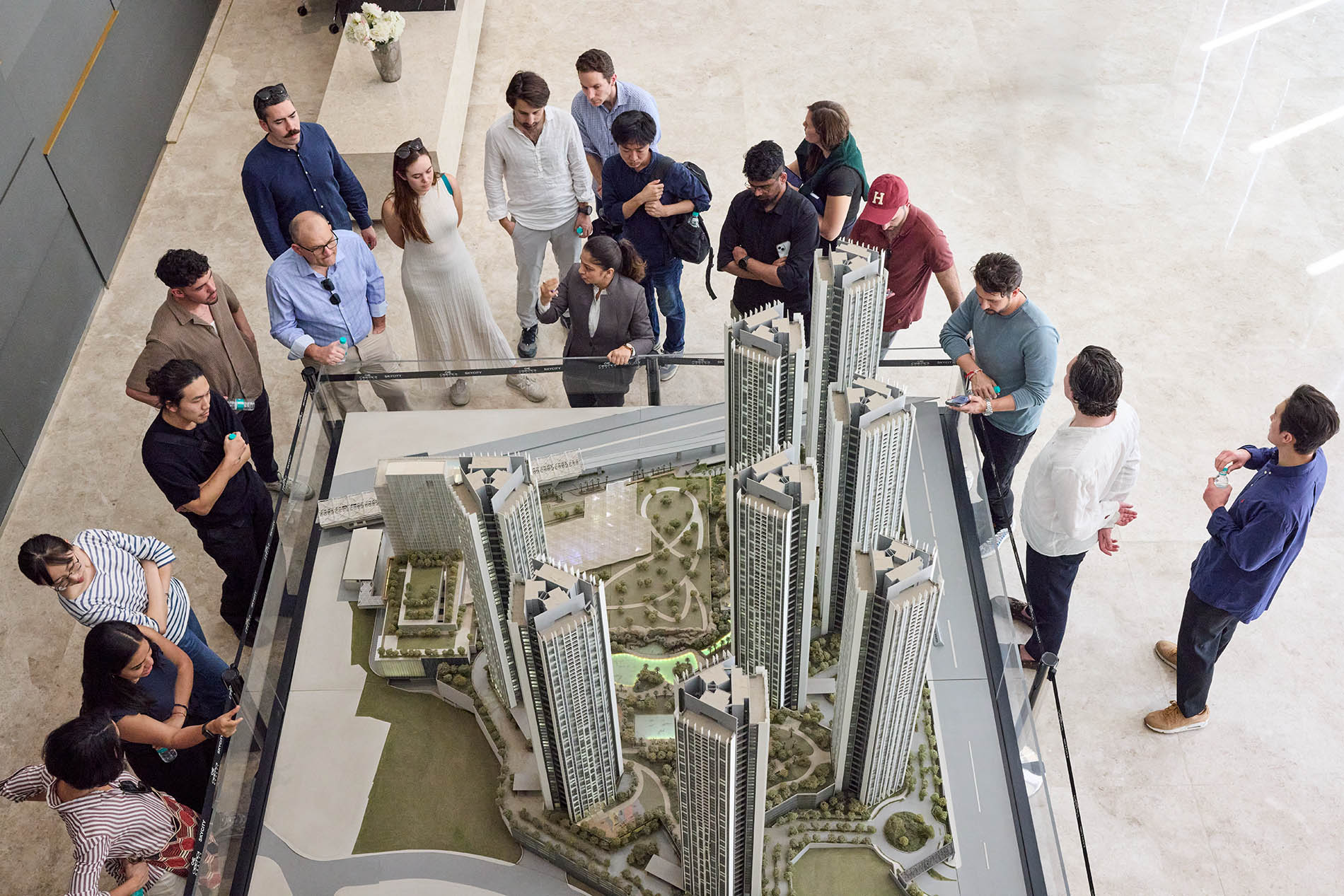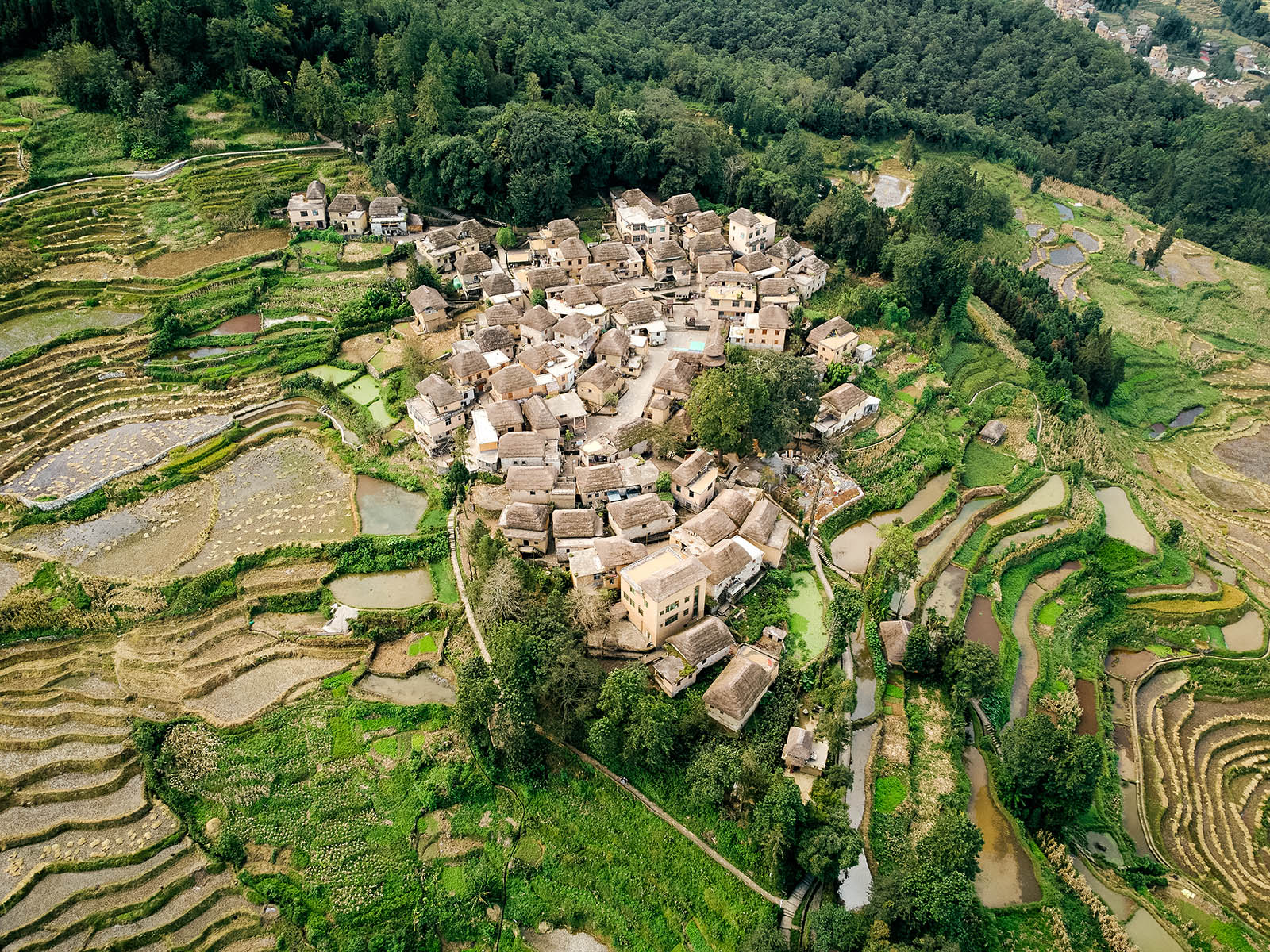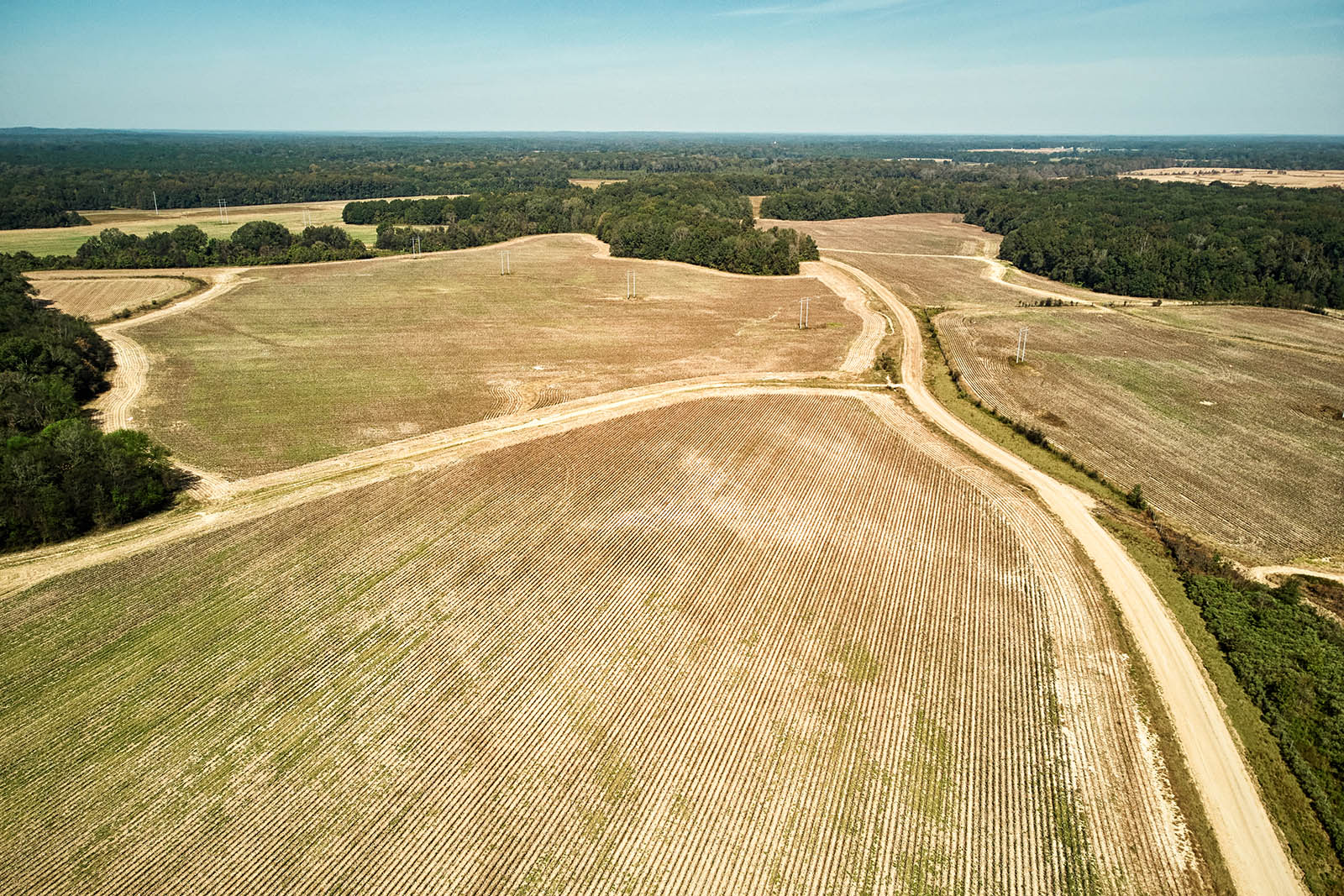How a Collaboration Between Design and Real Estate Advances Equity in Mumbai
Students in Rahul Mehrotra’s “Extreme Urbanism Mumbai” Graduate School of Design (GSD) Spring 2025 option studio faced a challenge that was intended to take them “completely outside their comfort level,” said Mehrotra. “We set a wicked problem that exposes them to an unfolding of interconnected issues.”
Mumbai, set on a peninsula on the northwest coast of India, is one of the largest and densest cities in the world, with a population of about 21.3 million residents and more than 36,200 people per square kilometer—most of whom face a stark housing crisis. Approximately 57 percent of Mumbai’s population lives in informal homes, many of whom work in nearby housing complexes where they’re employed by the upper-class residents. Most of the students in the studio had never been exposed to what Mehrotra describes as “extreme conditions, in terms of density, poverty, and the juxtaposition of different worlds in the same space.”
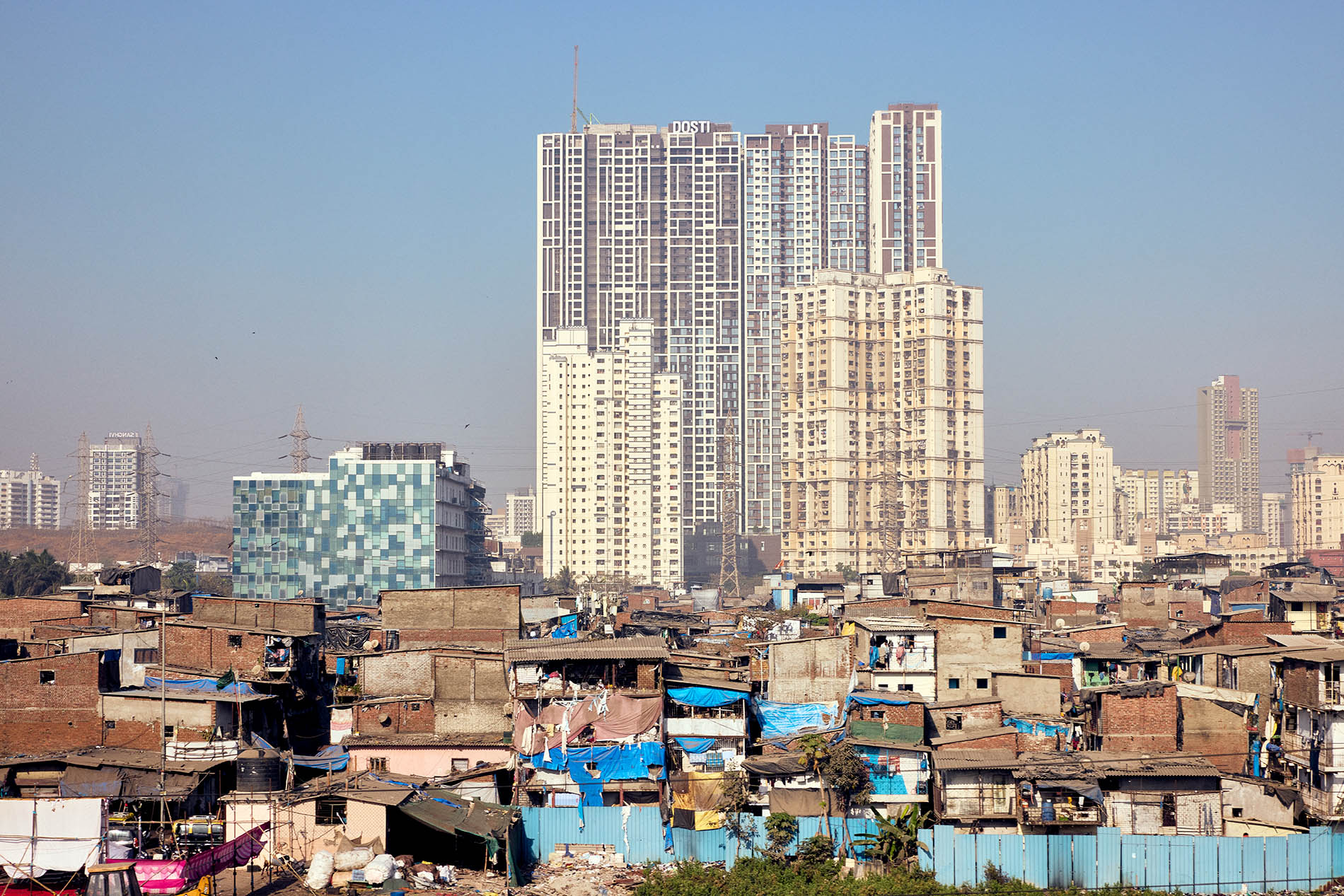
“Mumbai is like nothing I’d ever seen before,” said Enrique Lozano (MAUD ’26), who had previously traveled to other parts of India. “There’s no designed urban form; skyscrapers are scattered throughout the city. It’s on a former wetland, so there are issues with water, one of my research areas.”
He and his classmates were introduced to Mumbai’s coastal Elphinstone Estate neighborhood and a site owned by the Port Authoritiy of Mumbai that includes 40 acres of warehouses as well as iron and steel shipping offices, bounded on one side by a rail line and on the other by the harbor and P D’Mello Road, a major city street. “The Eastern Waterfront will be one of the city’s most contested land parcels to be opened for urban development in the next few years,” writes Mehrotra. “It plays a catalytic role in connecting the city back to the metropolitan hinterland….” The 900 or so people who work in this area and live in sidewalk tenements stand to be displaced once development progresses.
Elphinstone Estate — the site of the studio
Students were tasked with working at three scales: regional, district (the “superblock”), and site (urban development policy). Rather than displacing workers whose lives are strongly rooted in the neighborhood, students were asked to invent schemes that would newly house those 900 families in tenements by “cross-subsidizing from market-value housing.” The studio offered a counterpoint to the government’s designation of the site as a commercial district. Students’ proposals served what Mehrotra terms in reference to his research, “instruments of advocacy,” creating a way to keep the city’s most vulnerable residents where they have always lived, while also offering needed market-value homes.
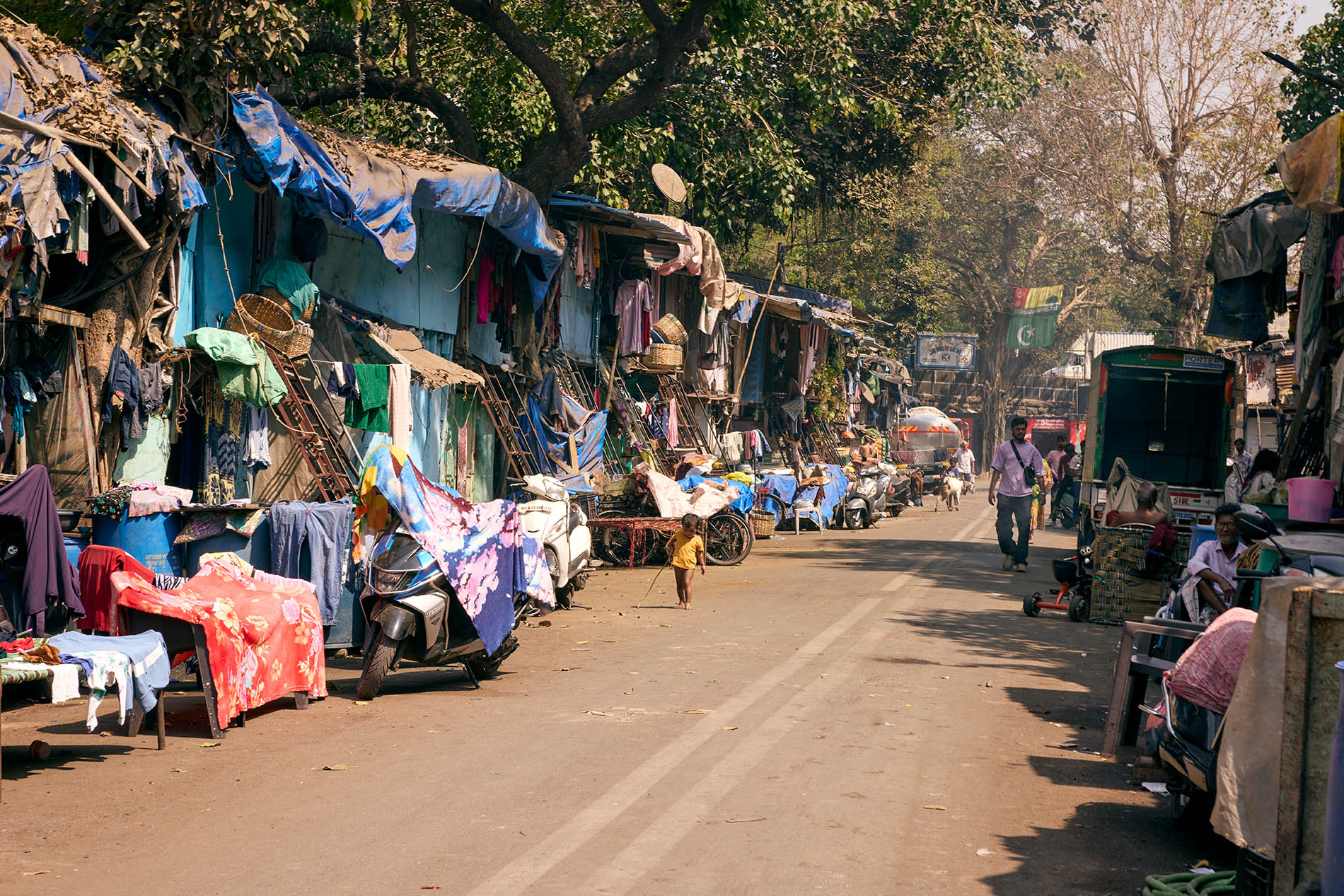
This studio differs from many others at the GSD, in that it involves collaboration between the studio and a Master in Real Estate course titled “The Development Project.” Jerold Kayden, Frank Backus Williams Professor of Urban Planning and Design and founding director of the Master in Real Estate Program, and Mehrotra brainstormed about the idea of such a collaboration and launched the idea in spring 2024. David Hamilton, a real estate faculty member at the GSD, co-instructed this year’s version in the spring 2025 semester.
“I think of real estate as the physical vessel in which people live, work, and play,” Kayden explained. “And if we can apply our multidisciplinary skills and knowledge to shape real estate in ways that create a more productive, sustainable, equitable, and pleasing world, then I can’t think of a more noble cause than that.”
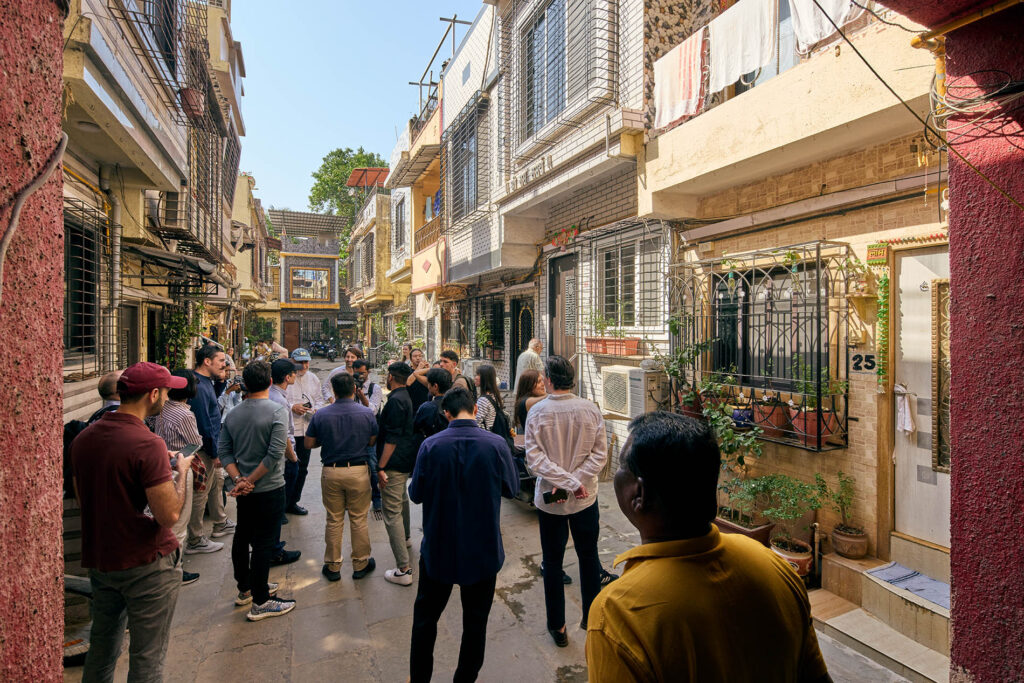
The magic of the combined studio and real estate class, as Kayden, Mehrotra, and Hamilton saw it, was that students from the two programs would be interdependent and could only solve the on-site housing challenges by working together. “The real estate students couldn’t own the problem because the designers didn’t design it in a way that would work in terms of real estate sense,” said Mehrotra. “And the designers couldn’t think of the design unless the real estate folks came up with a model of financing for that cross-subsidy.”
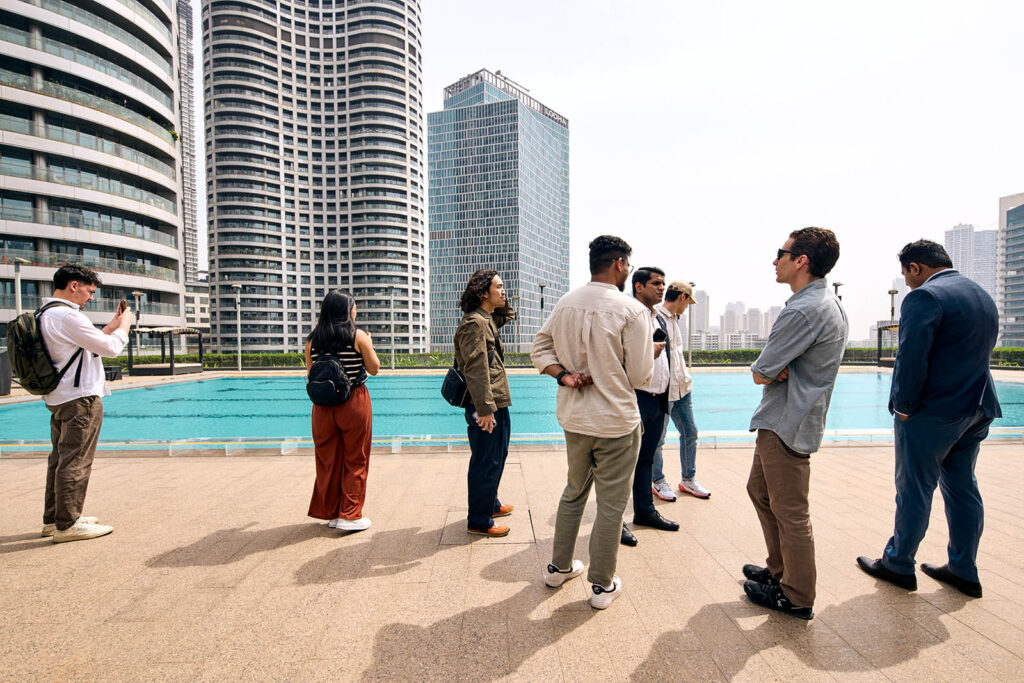
Hamilton concurred that the studio set up a collaborative tension that replicated real-world challenges: “We can imagine a path that gets us from having bright ideas and a beautiful piece of land, to a proposed future that’s both appealing and realistic enough to attract investment capital to be built. Then, we get to what we call stabilization, where the new neighborhood is working physically and financially in a sustainable way. Getting there involves a million different variables, from government action and public subsidies, to the needs of the market and investors and other financial considerations.”
Lozano saw the benefits of designing in Mumbai, where “the street is an even playing ground. Everybody takes the metro, walks the Plaza, buys street food in the markets.” At the same time, like most collaborators, his group had their share of challenges as they moved through the design process. “The entire studio was a negotiation between the students—of judging our values and understanding that the real estate students want to make a return on investment, but the subversion is the social mission, and the designers had to convince them that social space is an asset.”
He described a beautiful 19th-century clock tower on the Elphinstone site, which one of his real estate group members wanted to demolish, and how they negotiated the “iterative design process” and “pushed against the blank slate idea.” They kept the clock tower, which they saw as a cultural asset, and “turned it into an incredible public amenity with restrooms, civic spaces, and movie screenings. It’s an anchor and memory of the site itself, with the maritime history and labor organizing that occurred there.” Through the collaborative process, building trust by drawing and talking through their design plans, the design students developed a final project of which they’re proud.
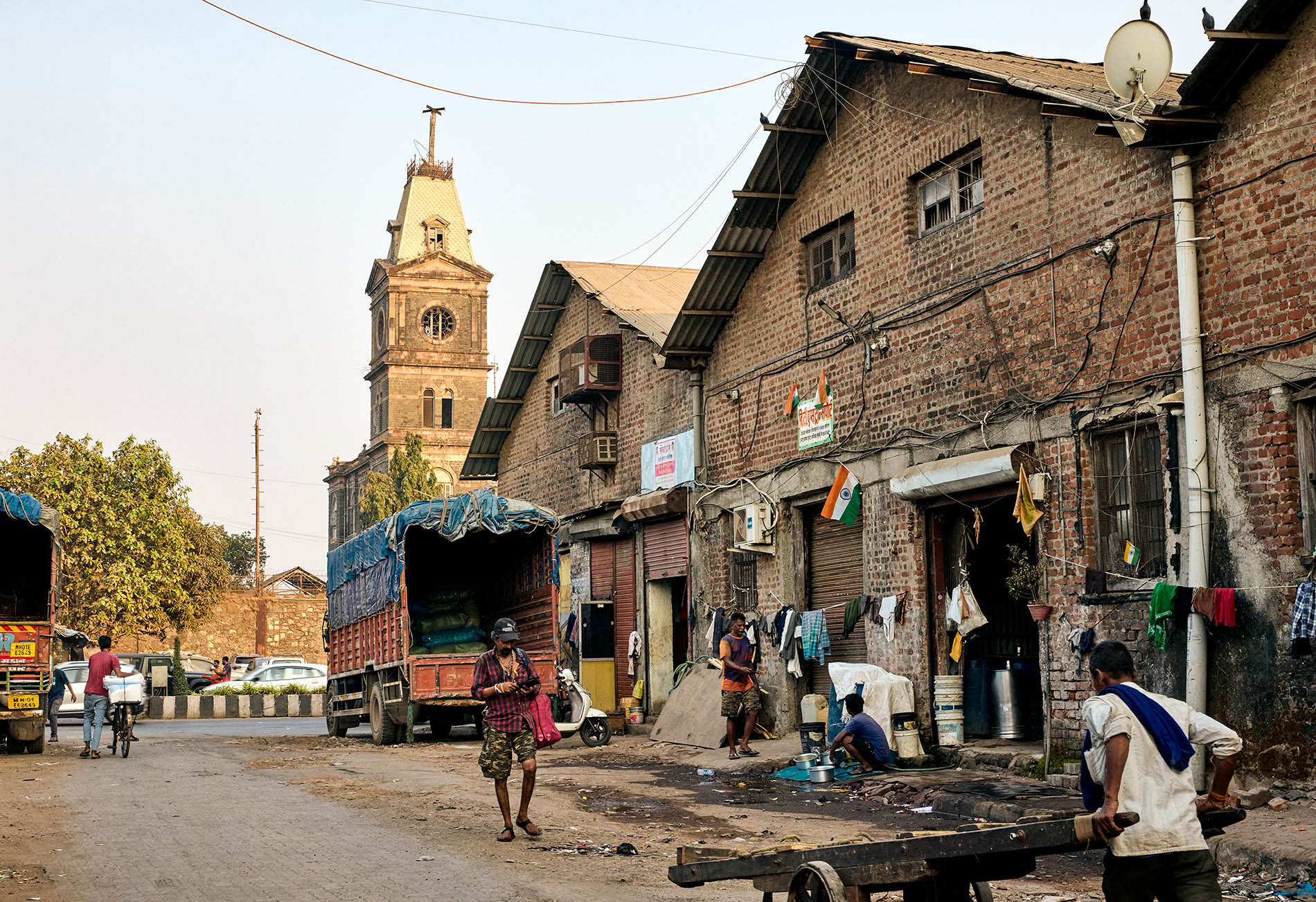
“As we become surrounded by the madness and complexities of the world we inhabit,” said Mehrotra, “it’s important to have multiple perspectives on the same problem, and to synthesize those multiple perspectives into a proposition.”
The final review mirrored the lively discourse the students experienced all semester, as critics discussed the merits of each proposal and the possibilities for the Elphinstone Estate. Sujata Saunik, Chief Secretary of the Government of Maharashtra, participated throughout the final review and helped bring to the conversation a sense of Mumbai’s realities. As the student groups together advocated for shared public access to the site and investing in dignified housing for people living in tenements, they presented to the government a more equitable approach to developing a site that’s unique as well as profitable.
“It’s not the solution,” said Mehrotra, “but it’s a conversation changer.”
Student Propositions

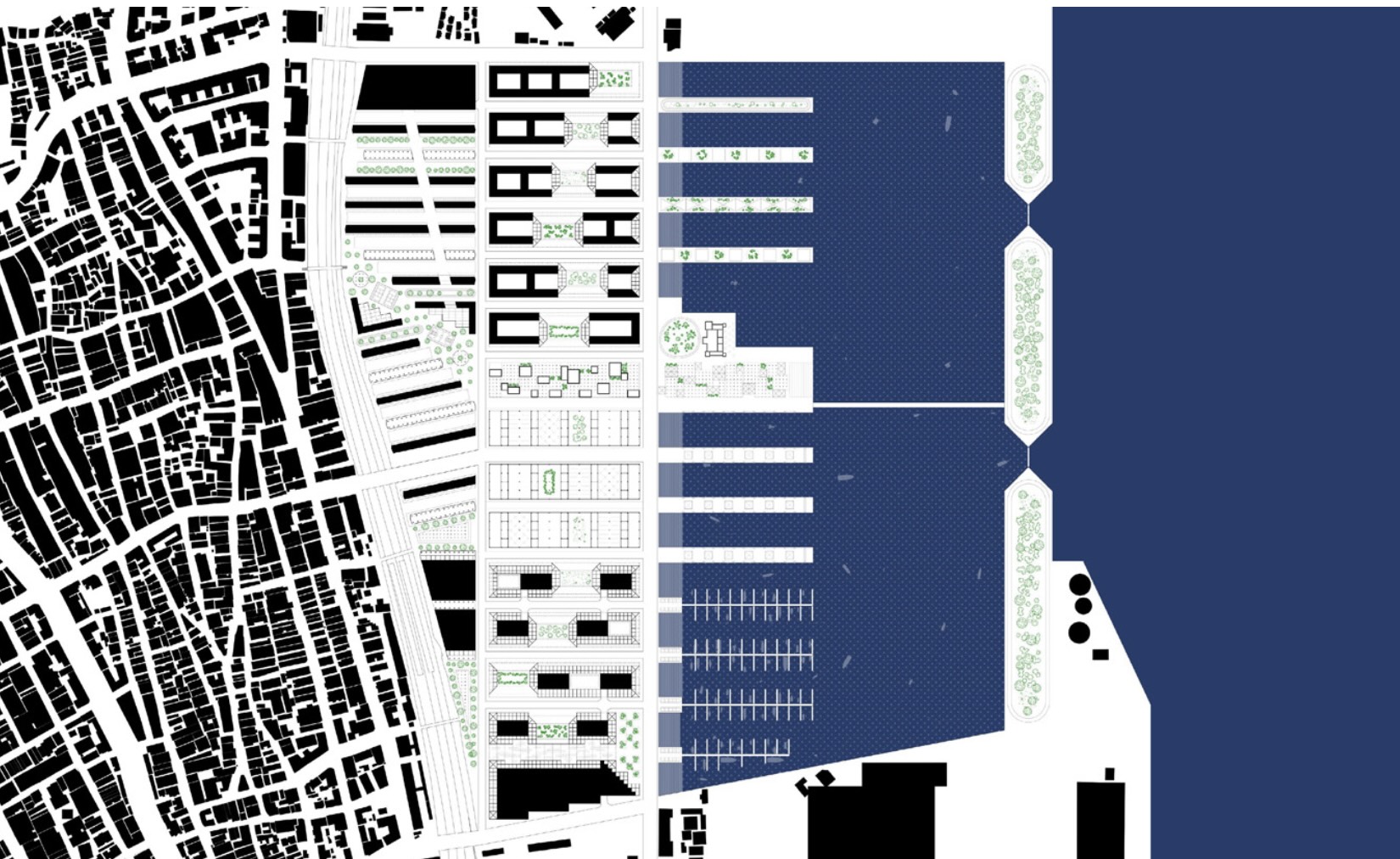
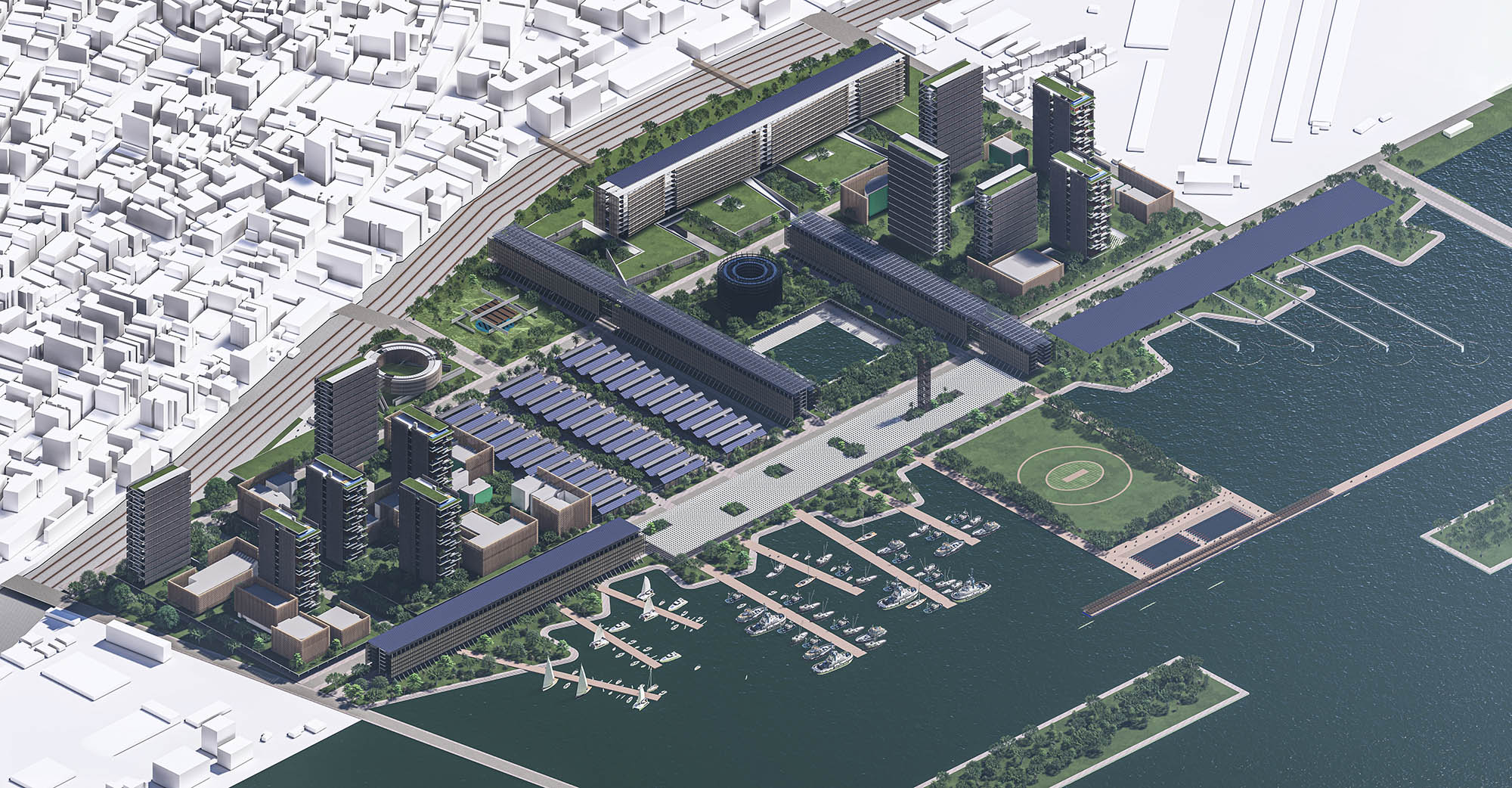
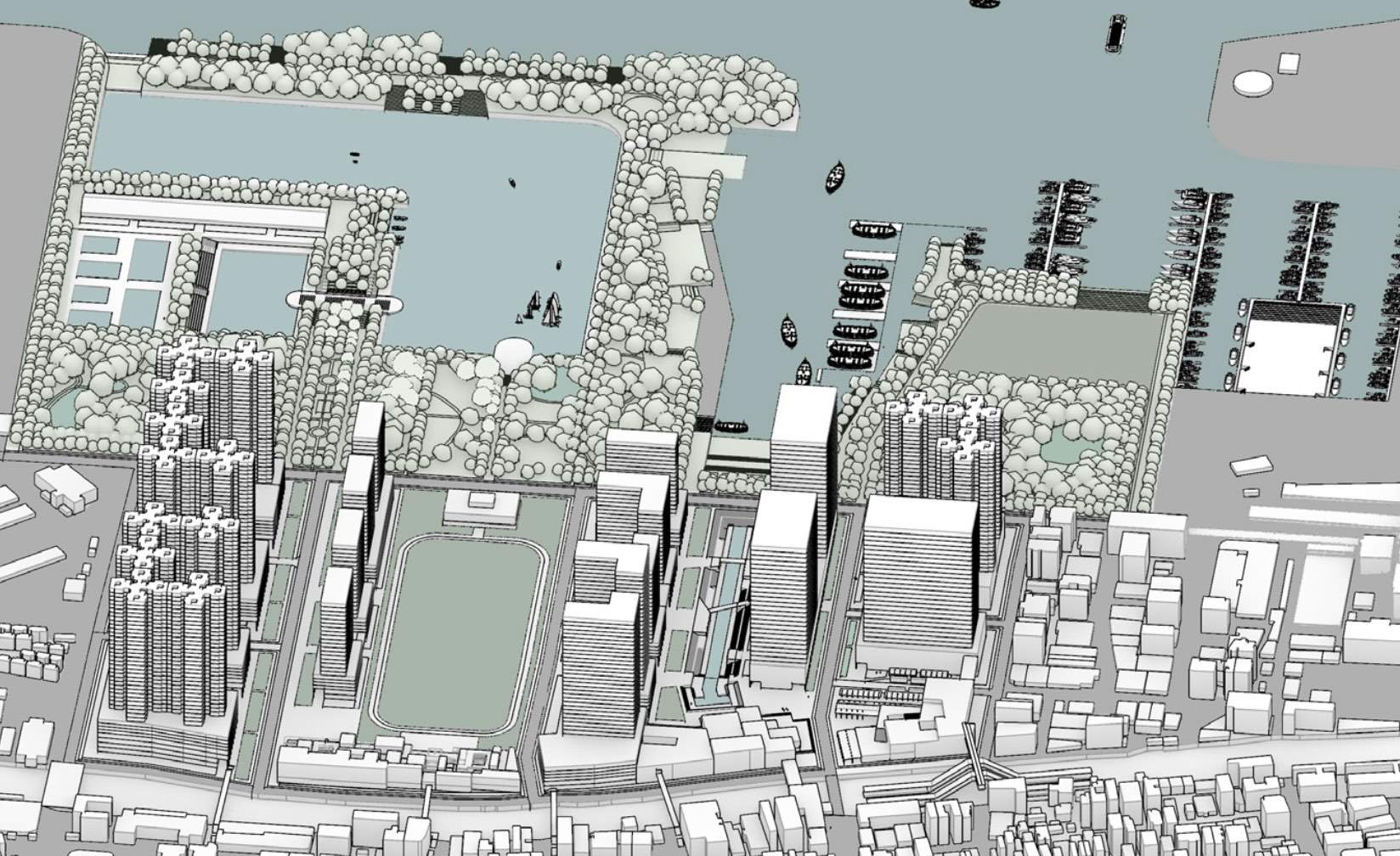
2025 Graduating Student Profiles
Meet members of the Harvard Graduate School of Design Class of 2025. These students represent the departments and disciplines that define the GSD’s unique approach to design education. Their work exemplifies the School’s mission to make a resilient, just, and beautiful world.
Ian Erickson (MArch I ’25)
Makio Yamamoto (MLA I AP/MUP ’25)
Priyamvada Gannavarapu (MAUD ’25)
Klara Kaufman (MDes ’25)
Daniel Rodriguez Rodriguez (MDE ’25)
Life on Earth: Zhang Ke’s Studio Melds Contemporary Architecture with an Ancient Landscape
The terraced rice fields of Yuanyang, in Yunnan Province, China, have been maintained and rebuilt continuously for more than 1,300 years. Designed to capture water flowing from mountaintops for natural irrigation, the terraces transform the steep walls of the Hong river valley into a gentle slope. This resilient geoengineering project has sustained rice production season after season for centuries. The traditional home to the Hani and Ifugao people, the area was designated a UNESCO World Heritage site in 2013 in recognition of its significant “cultural landscape.” Today, stunning vistas of the fields, which are enclosed by earthen barriers that follow the topography of the mountains, attract visitors from around the world.
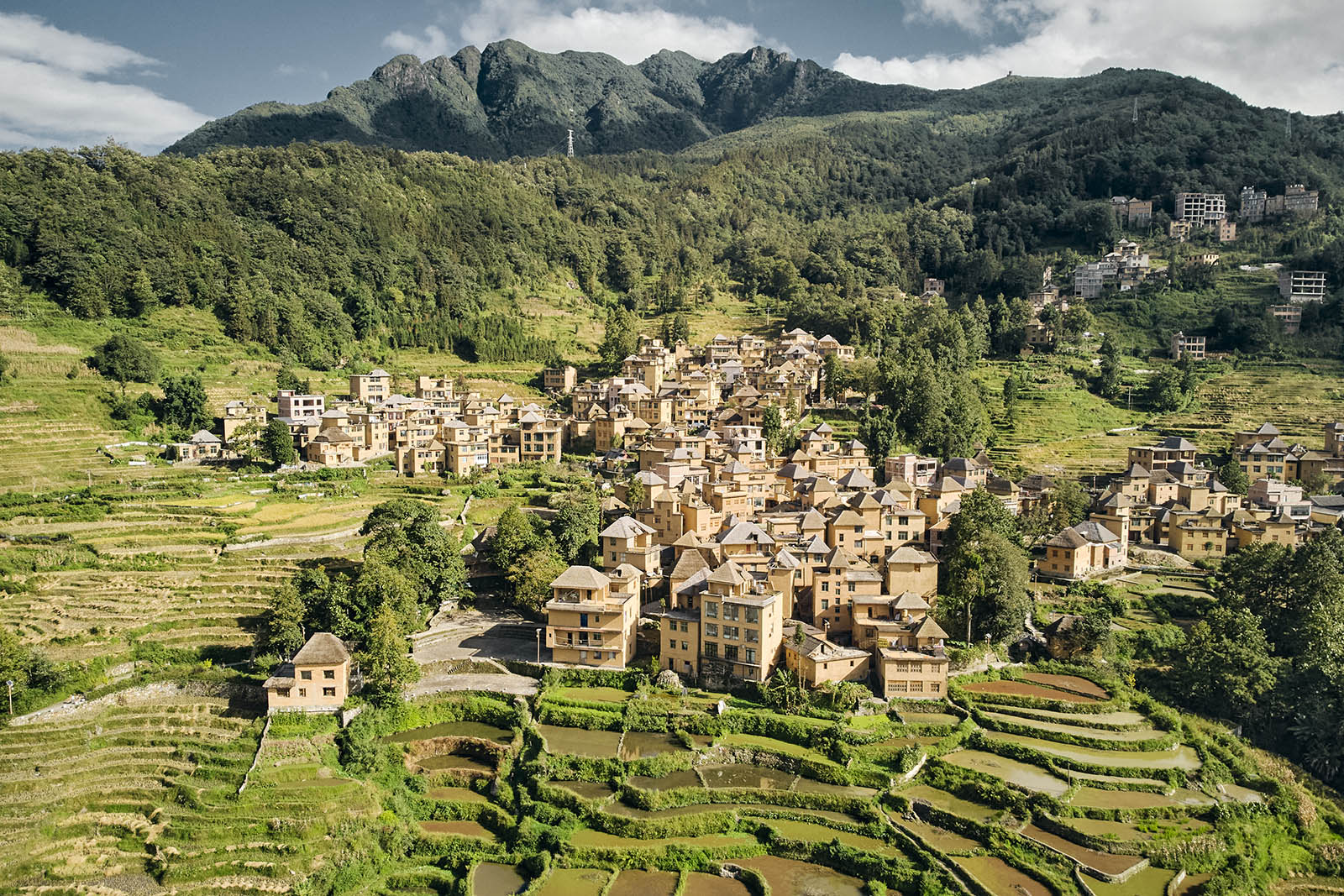
For Zhang Ke, Aga Khan Design Critic in Architecture at the Harvard Graduate School of Design, the ancient traditions of shaping the landscape at Yuanyang offer a point of departure for contemporary architecture. The terraces demonstrate “how agricultural landscape and natural landscape merge together,” he says. The earthworks were “created using local materials and then embedded in the landscape without intruding.” Zhang Ke sees the fields as a time-tested way of living in sync with the environment, embodying a concept he calls Earth-Dwelling.
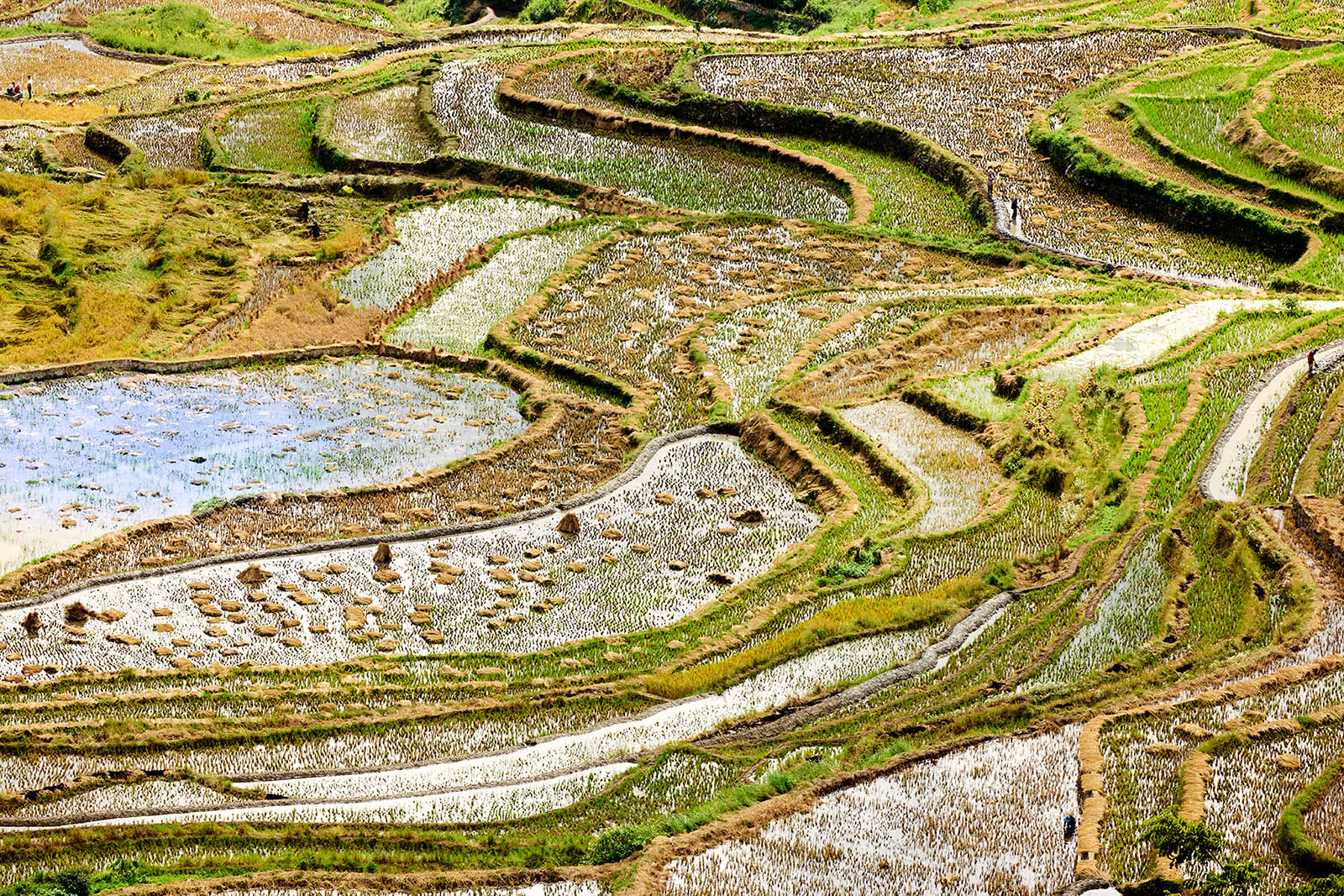
Zhang Ke, who received his MArch from the GSD in 1998, recently led an option studio that travelled to Yuanyang with the brief to develop not just architecture that responded to the spectacular landscape, but a program inspired by Earth-Dwelling that might enhance the area for residents and tourists alike. The founder of ZAO, Zhang Ke has explored related notions with GSD students previously in a 2017 option studio focused on Tibet. More recently, he has been drawn to Yuanyang for a collaboration with the Avant-Garde Library, an institution known in China for occupying daring architectural spaces, including a building in nearby Mengzi that Zhang Ke completed in 2021.
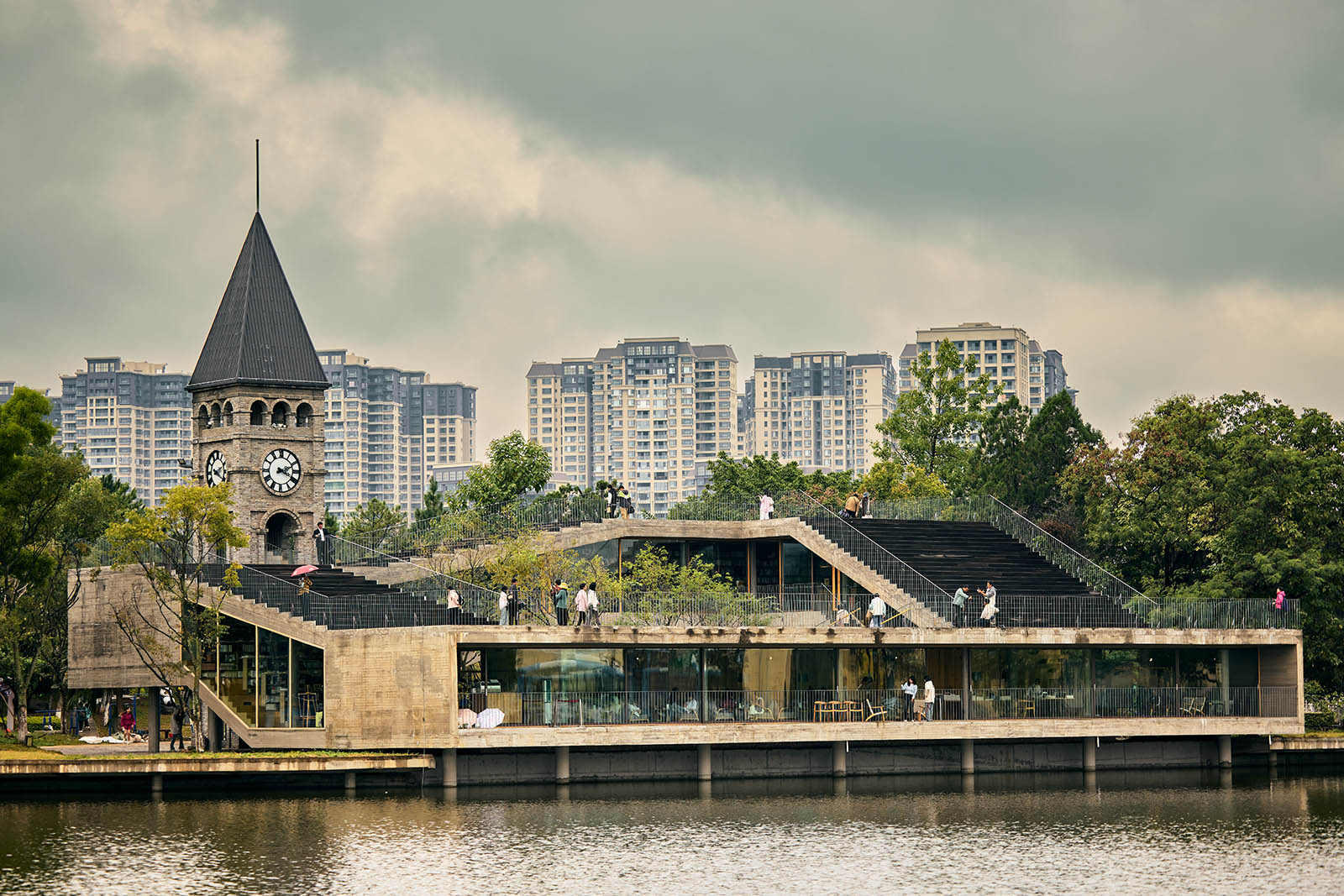
Zhang Ke’s design for a branch of the library in Yuanyang is a low-slung structure, the shape of which evokes the organic lines of the terraced fields. When completed, it will look and feel integrated with the earthen rice terraces, in part because Zhang Ke has chosen to work with rammed earth. “There’s a material continuation, but it’s clearly contemporary,” he said. “The standpoint is not to imitate but to invent.” More than proscribing the use of any material, Earth-Dwelling, as Zhang Ke defines it, specifies attentiveness to environmental conditions at different scales, an interlocking approach to fostering global sustainability, community development, and, with a nod to Heidegger, creative modes of life grounded in the physical experience of a place.
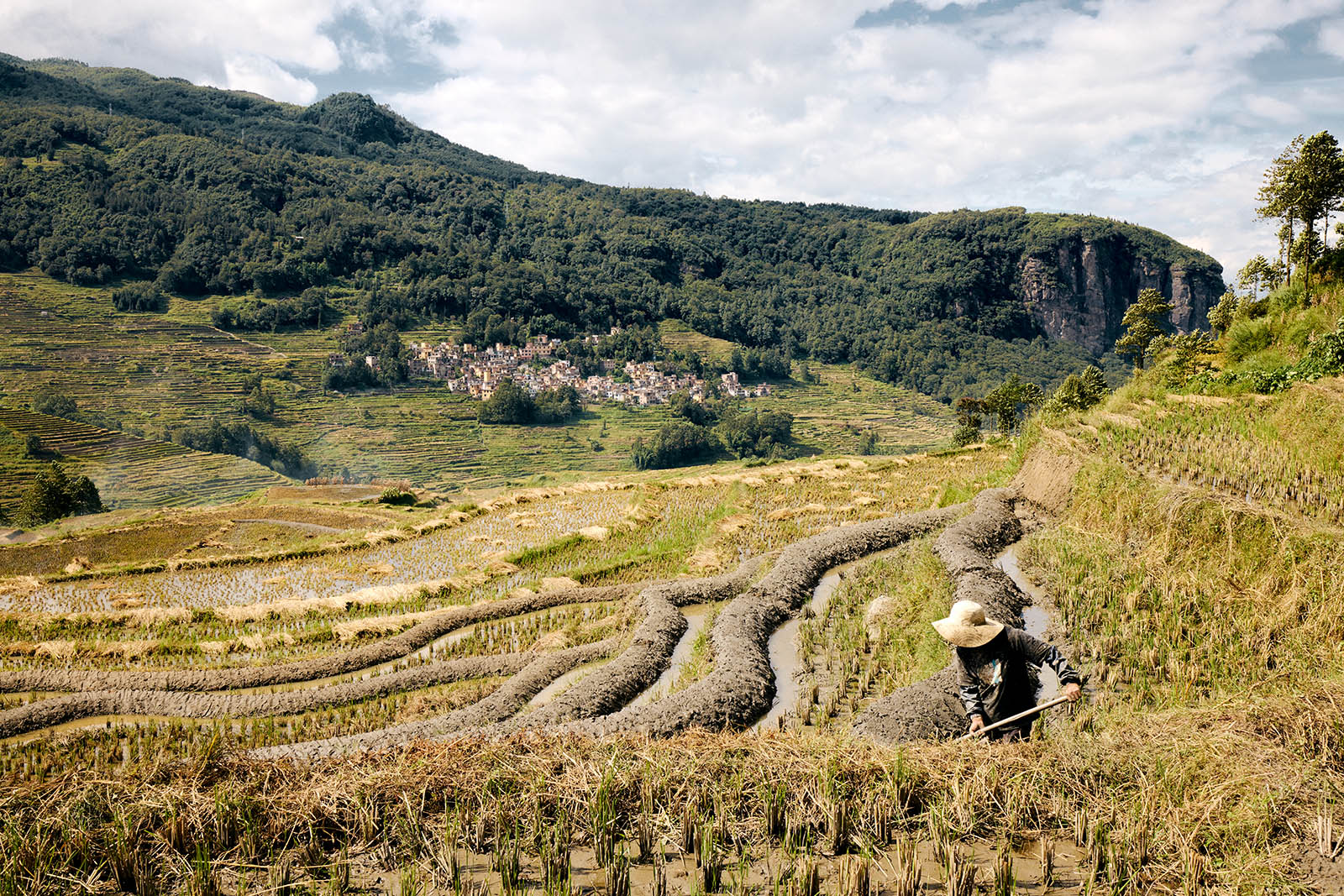
This perspective guided the fall 2024 research trip as part of a Department of Architecture option studio, which afforded a unique opportunity for GSD students to work in a rural setting with a delicate ecosystem and deep cultural roots.
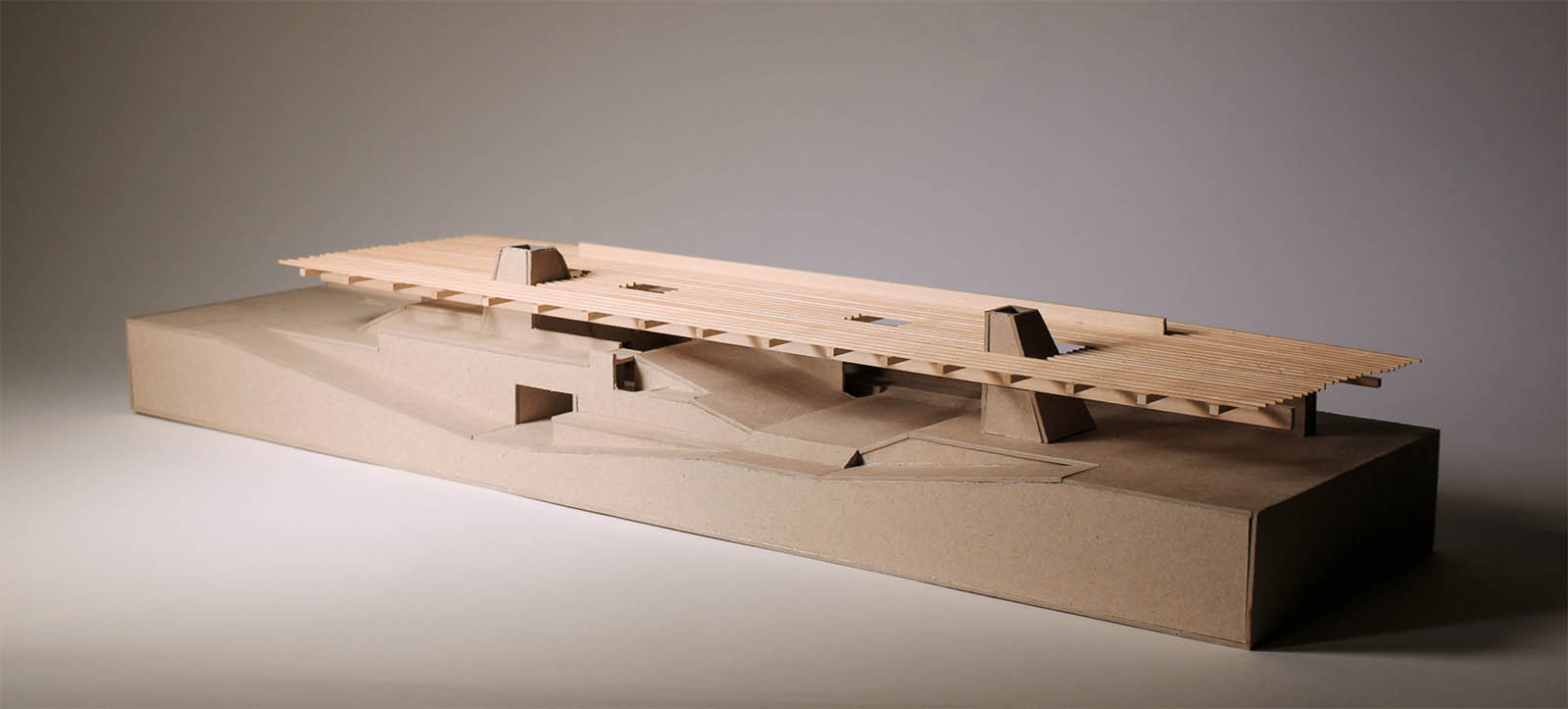
“It just seemed so natural to terrace a mountain face and use the water from up on the hillside,” recalled Lucas Almassy (MArch ’26) of his impressions of the area. “It made sense for me immediately. I would live there or anywhere similar.” Inspired by the landscape, Almassy found himself sketching “constantly” on the trip. “I didn’t know what I was really drawing, but I knew it was assemblages of stones and bricks. And as I was drawing, I realized I was drawing tables and chairs and benches growing out of the earth.” These preliminary drawings, and a later series of large-scale paintings, informed a proposal for a library, which Almassy describes as “social infrastructure” designed as a common space for members of existing communities in the area and visitors.
Guided by Zhang Ke, the studio met with local leaders and residents of the villages in the area, offering a chance to “see the land through the eyes of the people that live there,” says Abby Kuohn (MArch ’25). This consultation was especially critical because Zhang Ke tasked students with developing a program that could both benefit residents and offer a model for sustainable tourism. The ancient landscape of Yuanyang has, in recent years, been subject to contemporary social forces. While the UNESCO designation protected Yuanyang, it also guaranteed the arrival of mass tourism. A new airport under construction nearby promises to accelerate the growth of the tourist economy by allowing travelers to bypass the provincial capital of Kunming, a four-hour drive away.
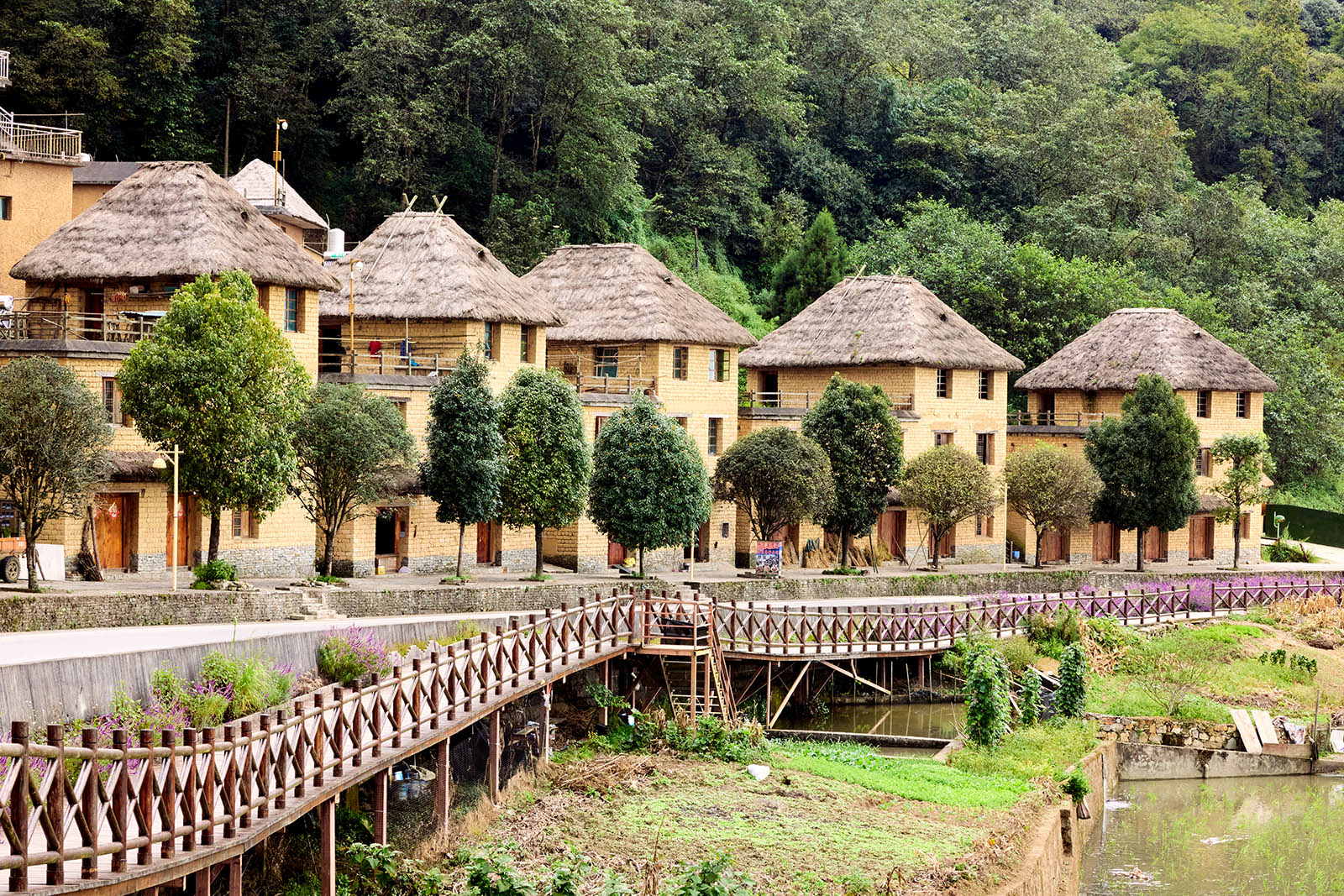
For Zhang Ke, architects must be proactive in addressing both the built environment and such changing social realities. His engagement with Yuanyang aims to help “increase the income of local communities . . . without losing a detached view of the potential consequences of tourism.”
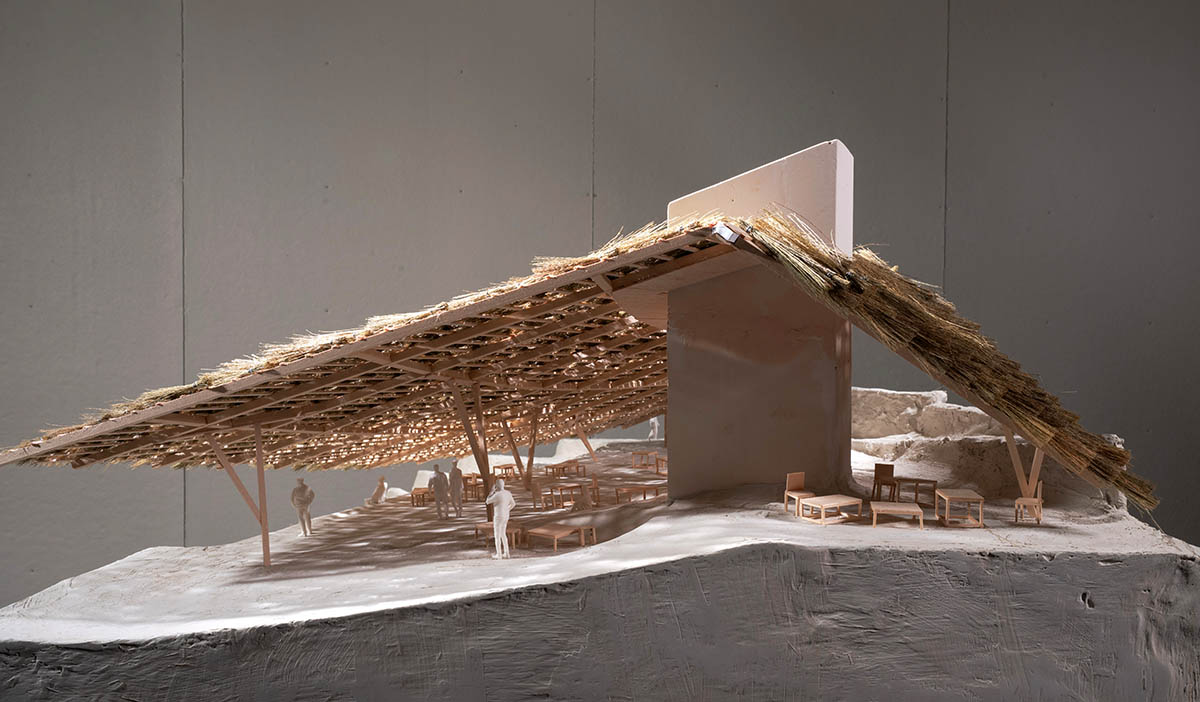
In his project, Peihao Jin (MArch II ’26) grappled the contradictory tendencies for tourism to increase awareness of local cultures while also threatening to degrade them. Noting a strong tradition of bamboo weaving in the area, especially among elder members of the community—“grandma and grandpa”, as he put it— Jin envisioned a pavilion to enclose a central square in a main village. Jin’s design for a dramatic thatch roof spanning the entire square would afford some protection from the elements while focusing views of the rice terraces. Offering an inviting space for both weavers and tourists, the structure would also employ local materials—rice straw thatching—that would effectively sustain the traditional technique by virtue of needing to be replaced on a three to five-year cycle.
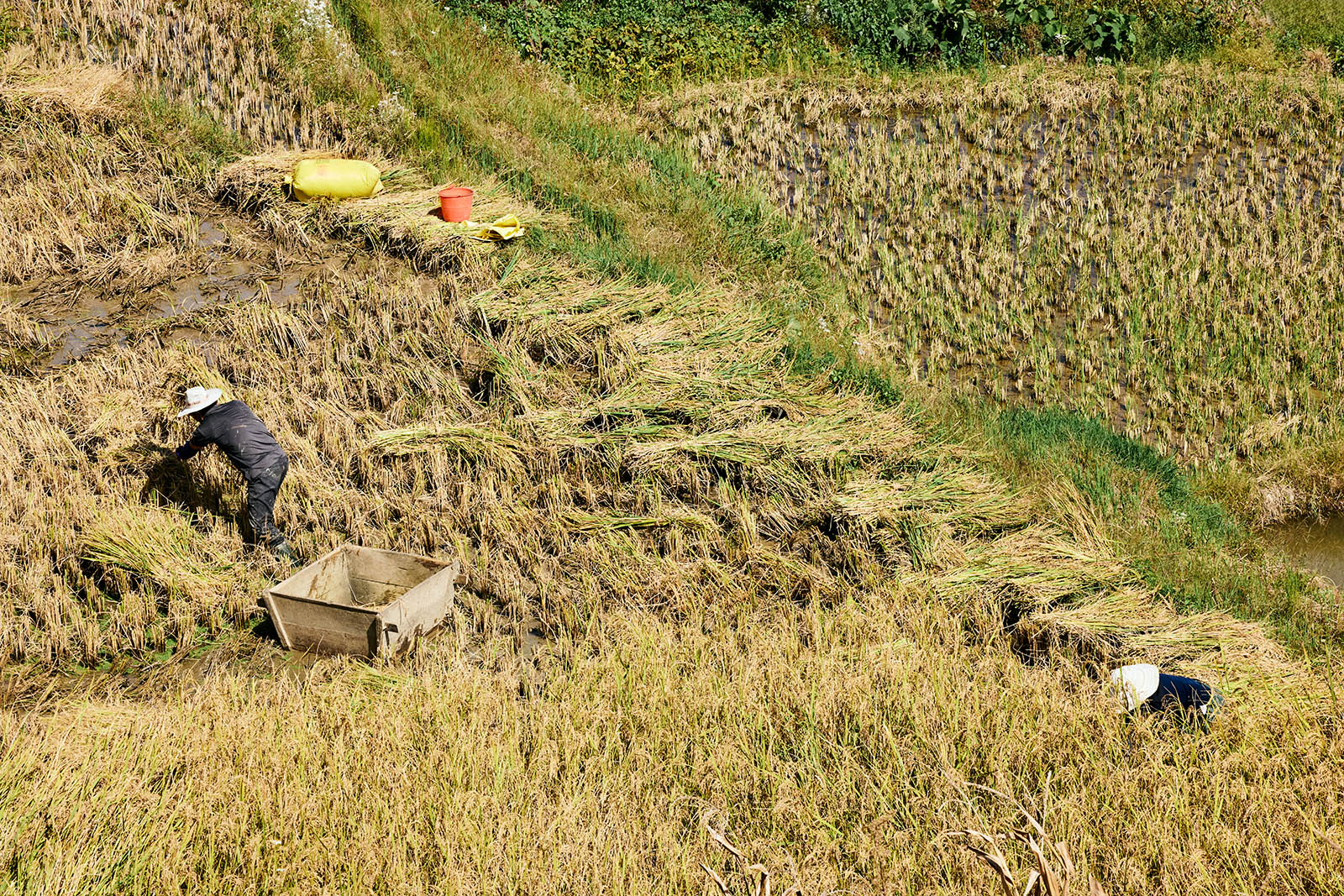

The agricultural economy of the area also informed the work of Aakash Dave (MAUD ’25), whose design for a rice noodle production facility employs rammed earth structures. “Earth was the biggest influence for my intervention,” he says, pointing both to the demonstration of rammed earth techniques that the studio witnessed at the site of Zhang Ke’s library as well as modes of building from his home country of India. Dave’s project also drew upon a careful study of how villagers used spaces between buildings for various stages of processing rice and byproducts, as well as the flow of water through both agricultural fields and dwellings. The spaces he created are meant to facilitate the traditional production of high-quality noodles using the red rice varietals for which Yuanyang is famous.
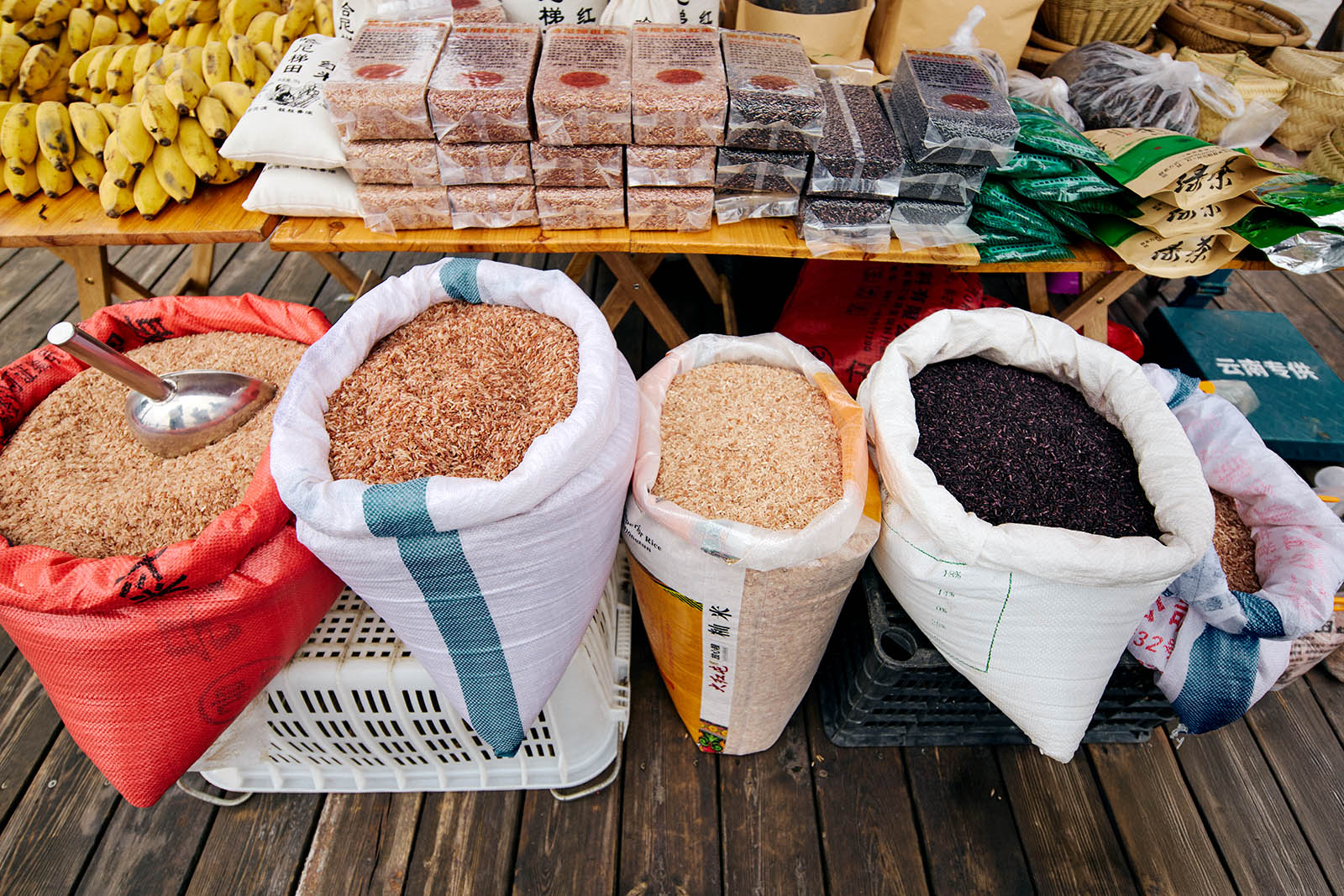
In addition to tourists, Zhang Ke says that rural areas like Yuanyang are also experiencing a more localized renewal. Following decades of intense urbanization in China, ambitious young people who might have once left villages for cities are returning home. Many are interested in preserving customs, like rice noodle manufacturing, while adding value. Traditional buildings are also being reconsidered. “Because of decades of demolition,” says Zhang Ke, such structures “are suddenly rare resources”. Indeed, a rural analogue to Zhang Ke’s work reimagining traditional hutongs in Beijing, for which he is well known, and ongoing projects to rehabilitate languishing villages.

While villages in Yuanyang appear to follow traditional construction techniques, with prominent thatched roofs, most are, in fact, recent reconstructions. Through a government initiative, many village buildings that had previously employed rammed earth were reconstructed from concrete, but made to resemble older structures. Still, ruins of previous villages exist in the area, and the studio hiked to one cluster of buildings with a commanding view of the valley.
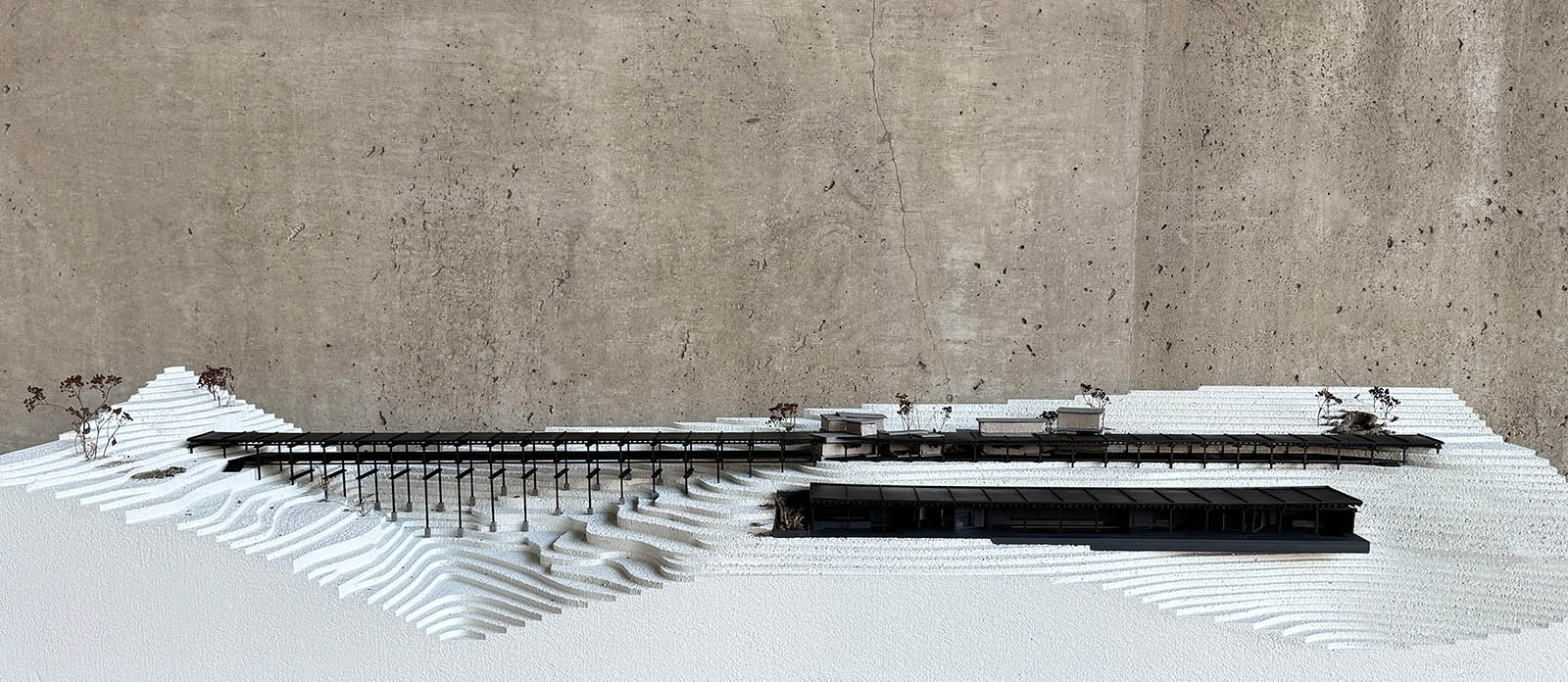
Kuohn selected this site for her project, which engages with traditional water systems. “One of the things that I found captivating about this area was how powerful and intricately engineered the water system was,” she says, observing how residents “constructed their dwellings in the villages all the way through the rice terraces themselves, and then down to the river. Without the water system, the entire ecosystem of the area wouldn’t work.” Kuohn devised a bathhouse that makes use of a peak-spanning bridge structure. Celebrating the central place of water in the community and offering a counter to its association with agricultural work, her proposal invites residents and tourists to find a source of rejuvenation.

“Earth, for our ancestors, contemporaries, and future generations alike, means also one of the most basic and sustainable materials for building,” Zhang Ke wrote in a description of the course prior to final reviews of the projects. Though many found inspiration in a broader conception of Earth-Dwelling and made use of a variety of materials, students strove to articulate connection to lifeways that predate us and possibly extend beyond our own time.
2024 Graduating Student Profiles
Meet members of the Harvard Graduate School of Design Class of 2024. These students represent the departments and disciplines that define the GSD’s unique approach to design education. Their work exemplifies the School’s mission to make a resilient, just, and beautiful world.
Mariama M.M. Kah (MArch II ’24)
Daniella Slowik (MLA ’24)
Curry J. Hackett (MAUD ’24)
Haewon Ma (MDes ’24)
Binita Gupta (MDE ’24)
Designing Food Security in Rural Mississippi
For nearly a decade, Mississippi has ranked as America’s hungriest state. Nearly 19 percent of its citizens—about 600,000 people—face food insecurity, including one in four children. This catastrophe is not the fault of geography. Agriculture serves as the state’s main industry, with about 34,700 farms operating across 10.4 million acres of fertile soil. The fault principally lies in a long history of exploitation, from the arrival of settler colonialists who identified its promise and built some of the South’s largest plantations to the continued privileging of crops grown for profit, like soy and hay, which perpetuates the legacy of slavery.
In his fall 2022 studio, “The Paradox of Hunger—Rural Mississippi,” Design Critic in Architecture Cory Henry asked students to examine this crisis and investigate what mitigating role architecture and design could play. “In Mississippi, you have some of the most arable land in the country,” says Henry. “Over 30 percent of the state is farmland—a percentage which is growing—but the state consistently ranks as one of the most food insecure in the country.”

In Mississippi, you have some of the most arable land in the country,” says Henry. “Over 30 percent of the state is farmland—a percentage which is growing—but the state consistently ranks as one of the most food insecure in the country.
Cory Henry
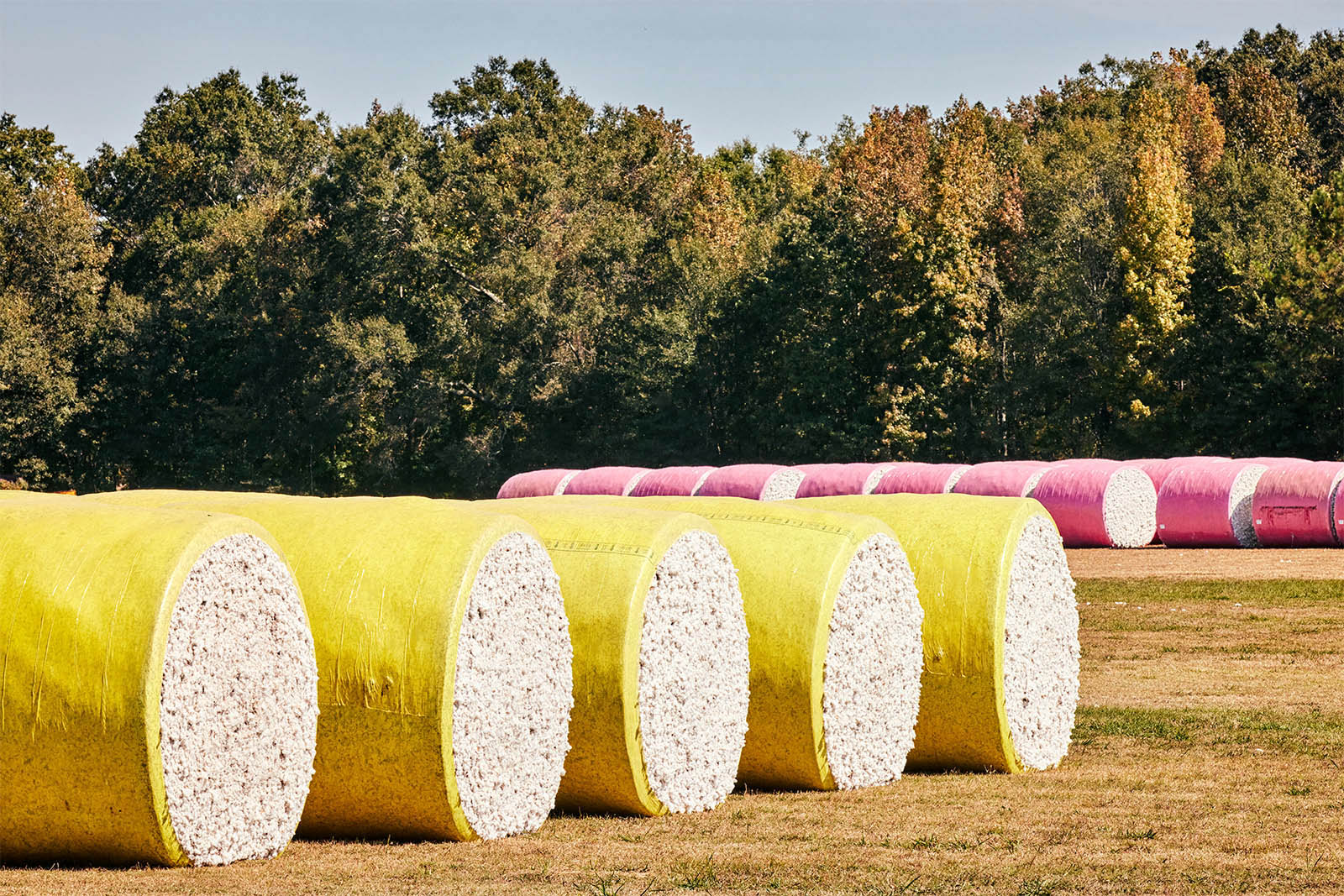
That land has attracted numerous out-of-state investment funds as well as wealthy Americans. It was only for sale, however, after being stolen from Black and Indigenous people, sometimes with the help of abusive policies. In these instances, profit motivates more than feeding local people: only 45,000 of those 10.4 million acres are devoted to fruits and vegetables. “A farmer told me that Mississippi farms value the green dollar more than the green for sustenance,” says Henry. As a result, the state imports most of its produce, which in turn is difficult for many to access due to a dearth of grocery stores. Dollar Generals, which do not sell fresh produce, are often the nearest source of food, particularly in rural areas.
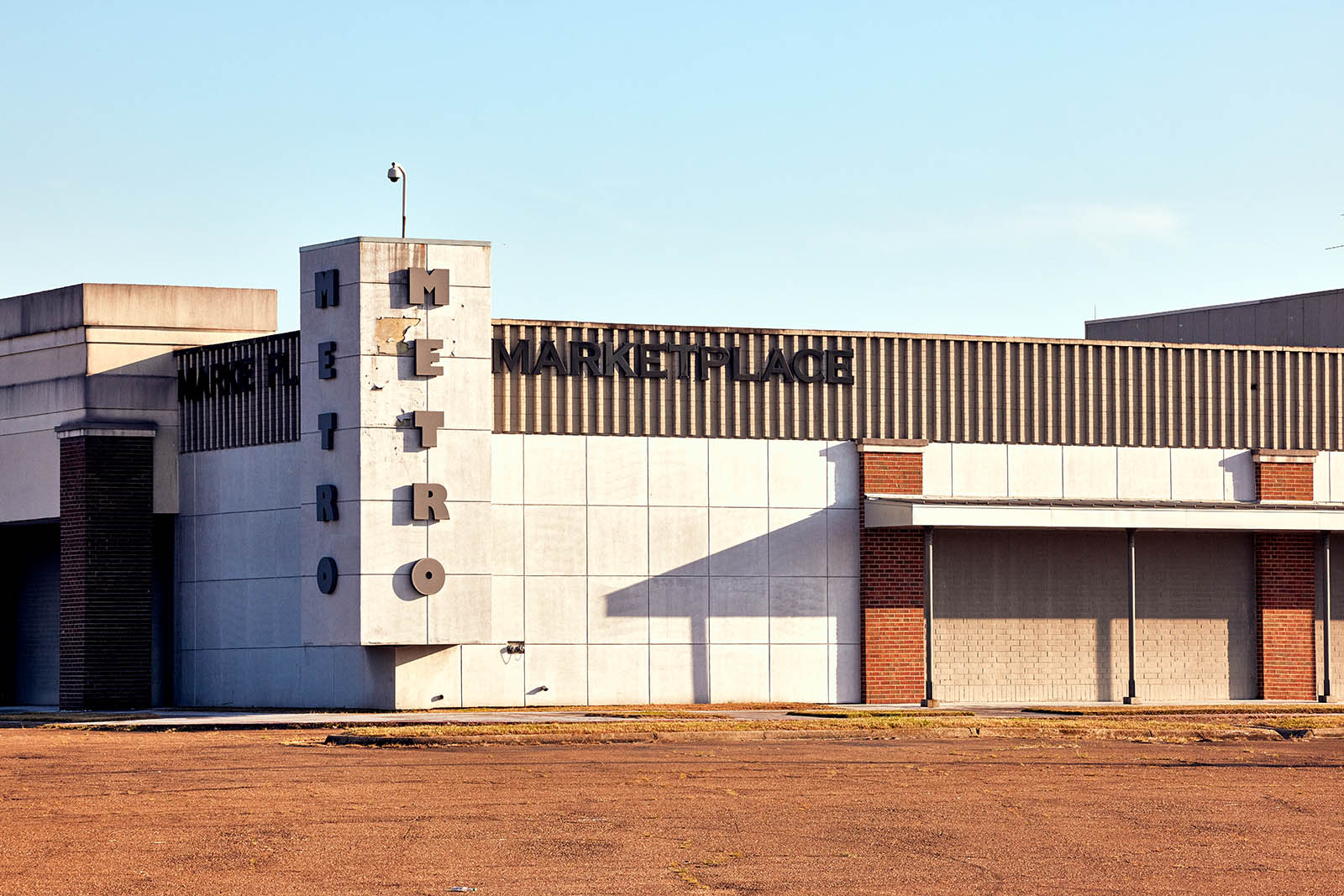
This condition contradicts the dream Laurence C. Jones had in 1909 when he founded the Piney Woods School, the nation’s second oldest continuously operating Black boarding school, located about 21 miles southeast of Jackson. Jones’s mission was to teach formerly enslaved people not just how to read but also about food sovereignty. “We educate for the head, the heart, and the hands” remains a foundational motto. Occupying approximately 2,000 acres, about 10 percent of which is farmland, the school became an ideal case study for Henry’s students to translate their research on the multipronged roots of food insecurity into a concrete intervention at a specific site.
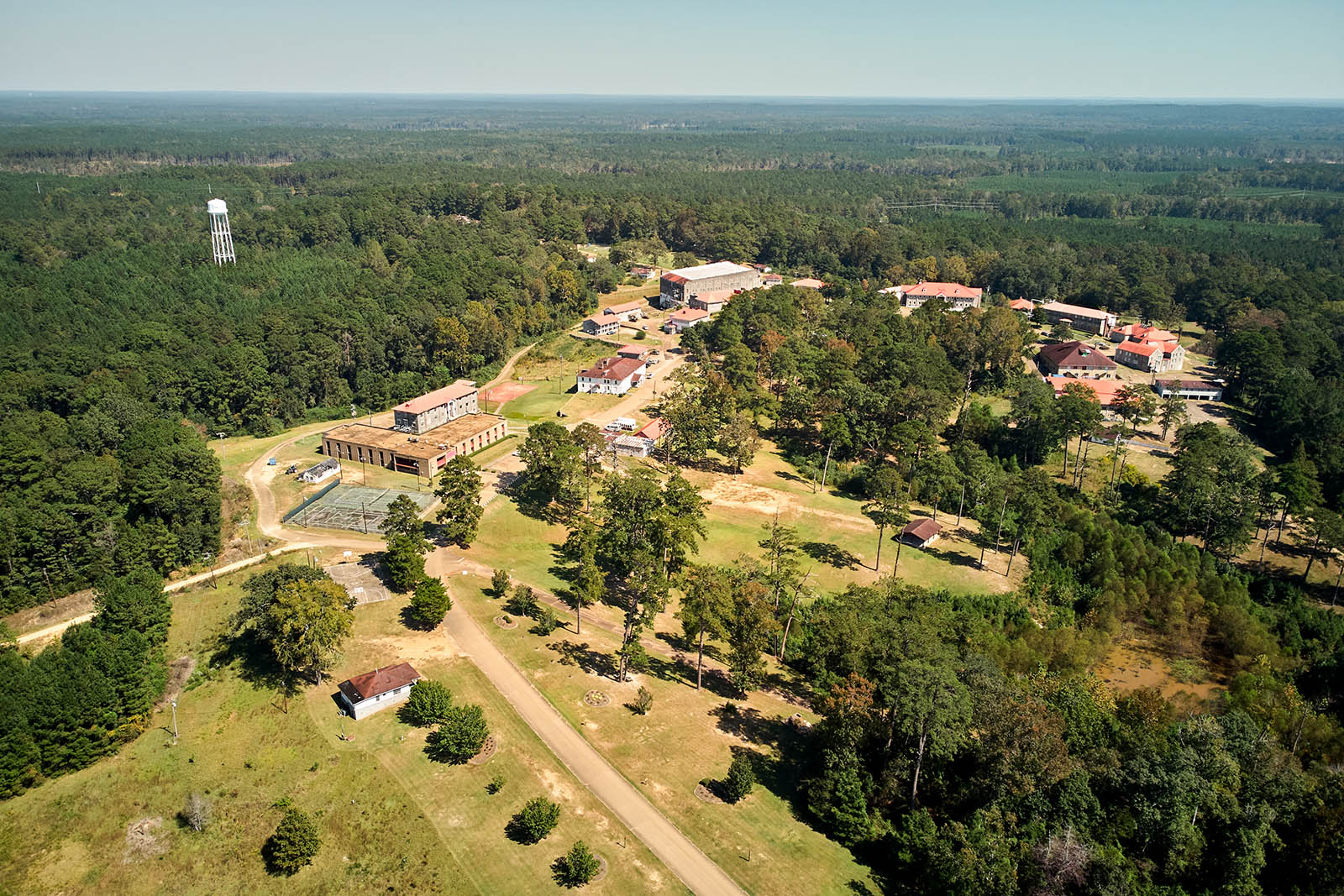
The COVID-19 pandemic exposed many of the country’s structural inequalities that already existed. These include how Black, non-Hispanic households are twice as likely to be food insecure,” says Henry. “I wanted students to understand the agency of our design disciplines—that we must understand the socioeconomic conditions of a place in order to have meaningful change—and to explore ways in which design thinking can create opportunities for food sovereignty.
Younger Americans do not gravitate toward farming careers. According to the 2017 census, the average age of a Mississippi farmer is 60. At Piney Woods specifically, the farm today carries punitive associations, with students sent there as a form of discipline. Altering these impressions requires creating a new relationship between the youth and the natural environment—one that emphasizes joy and excitement rather than obligation.
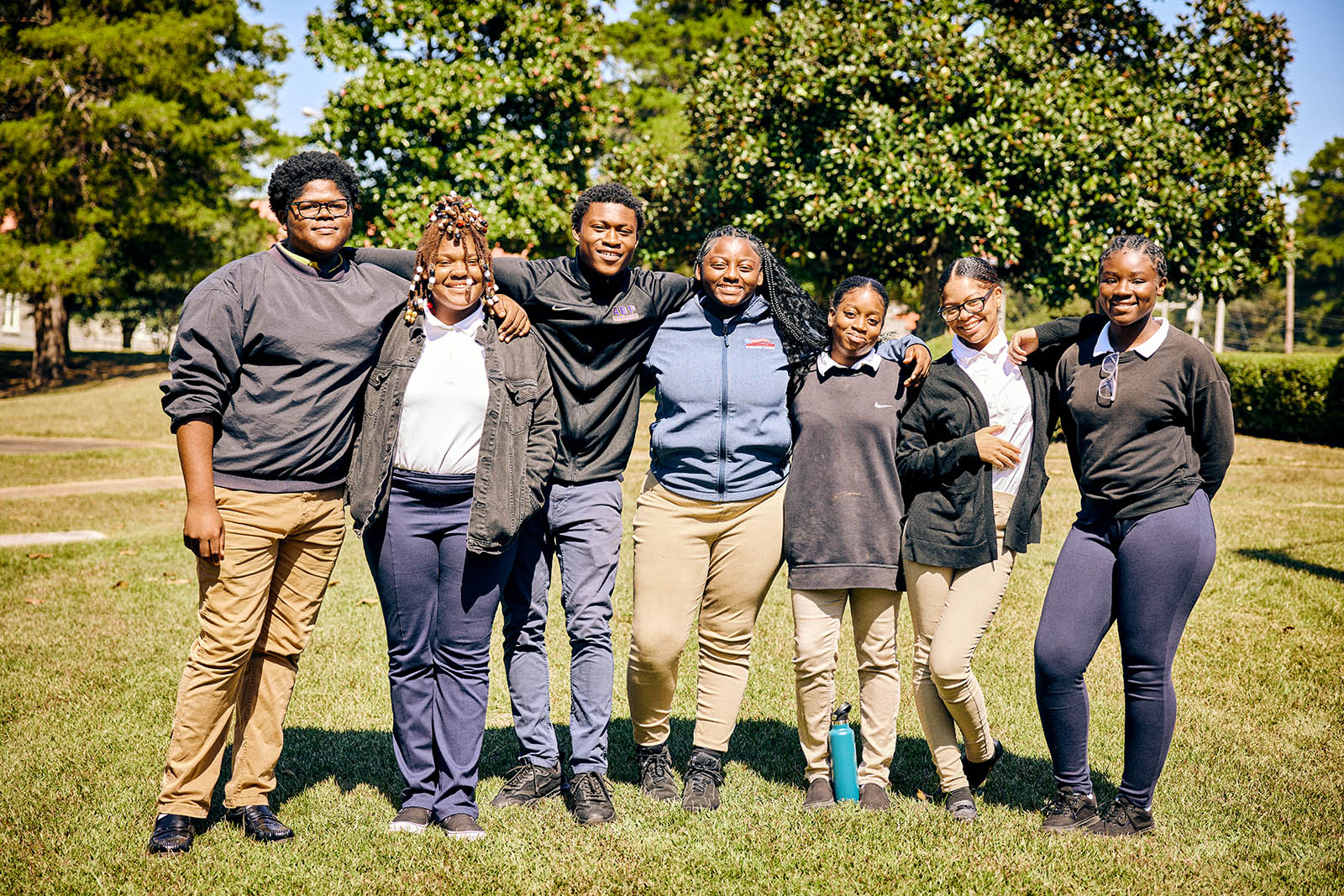
Avi Robinson (MArch ’23) and Supriya Ambwani (MLA ’23) understood that inculcating a positive connection to farming will not arise from harsh prescriptions, particularly for high schoolers and especially those in communities with an acute awareness of the history of slavery. Freedom—of choice, movement, and program—resonates throughout their design. “Spaces often tell you what you can or cannot do,” says Robinson. “The more nondescript spaces are, the more flexibility you have.”
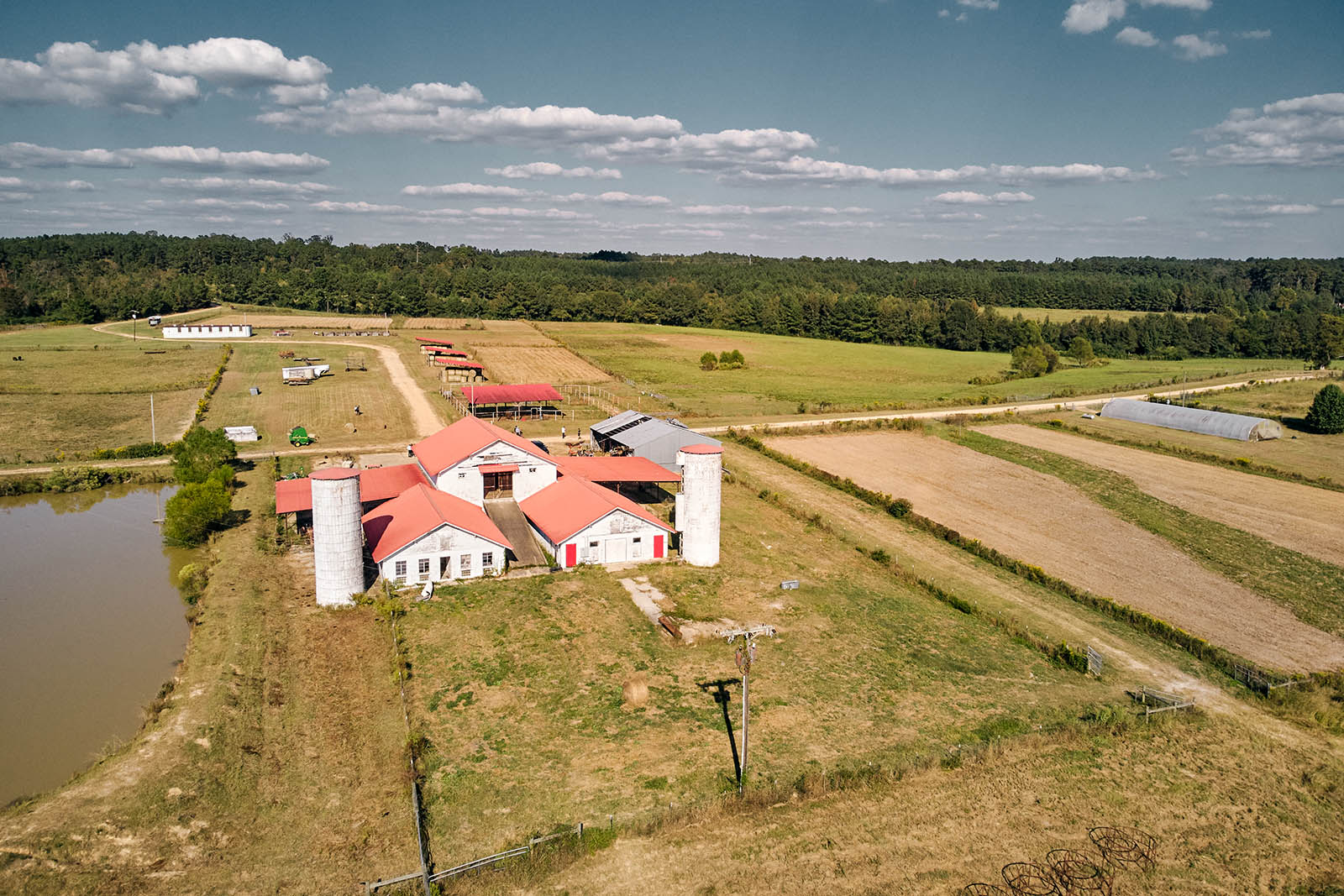
Utilizing inexpensive materials such as plywood and employing ancient techniques like rammed earth, the pair emphasized minimalist simplicity. At the site of the existing barn, for instance, they retained the original structure but added a variation of terraced farming inspired by farms in South Africa, with plots arrayed throughout a series of long, arched passages that are enclosed in chain-link fences. This expansion created room for a kitchen, where food from the farm can be taken directly and either stored or served, making an alternative to the cafeteria. Guided by the impulse not to demarcate aspects of the plan as being strictly focused on sustainability, waste, design, or any other narrow concept, the complex becomes multiuse in a way that makes the food cycle more legible.
Hybridity is emphasized further in the new makerspace, which includes a woodshop, classroom, computer lab, library, and drawing studio. It acts as a center for hands-on learning, such as the construction of goat sheds which house the herd that provides fertilizer. The frame of the makerspace partially echoes the sloping arches of the new barn complex. And as with the chain-link roofs in the barn, the porousness of the building’s multistory, floor-to-ceiling windows establish an attachment to the land, even for those uninterested in this work.
But the flexibility of Robinson and Ambwani’s design encourages students to use these spaces in ways both related and unrelated to farming—whether doing homework or just hanging out. It also positions Piney Woods as a site of inspiration for schools and institutions in Mississippi and beyond, with plans that are more widely adaptable than rigidly defined spaces. “I wanted to find ingredients that people could use,” explains Robinson. “What you see are the current needs of Piney Woods. But this is an entry point, a recipe book, about how to mix things together to address, in any specific situation, both food and education.”
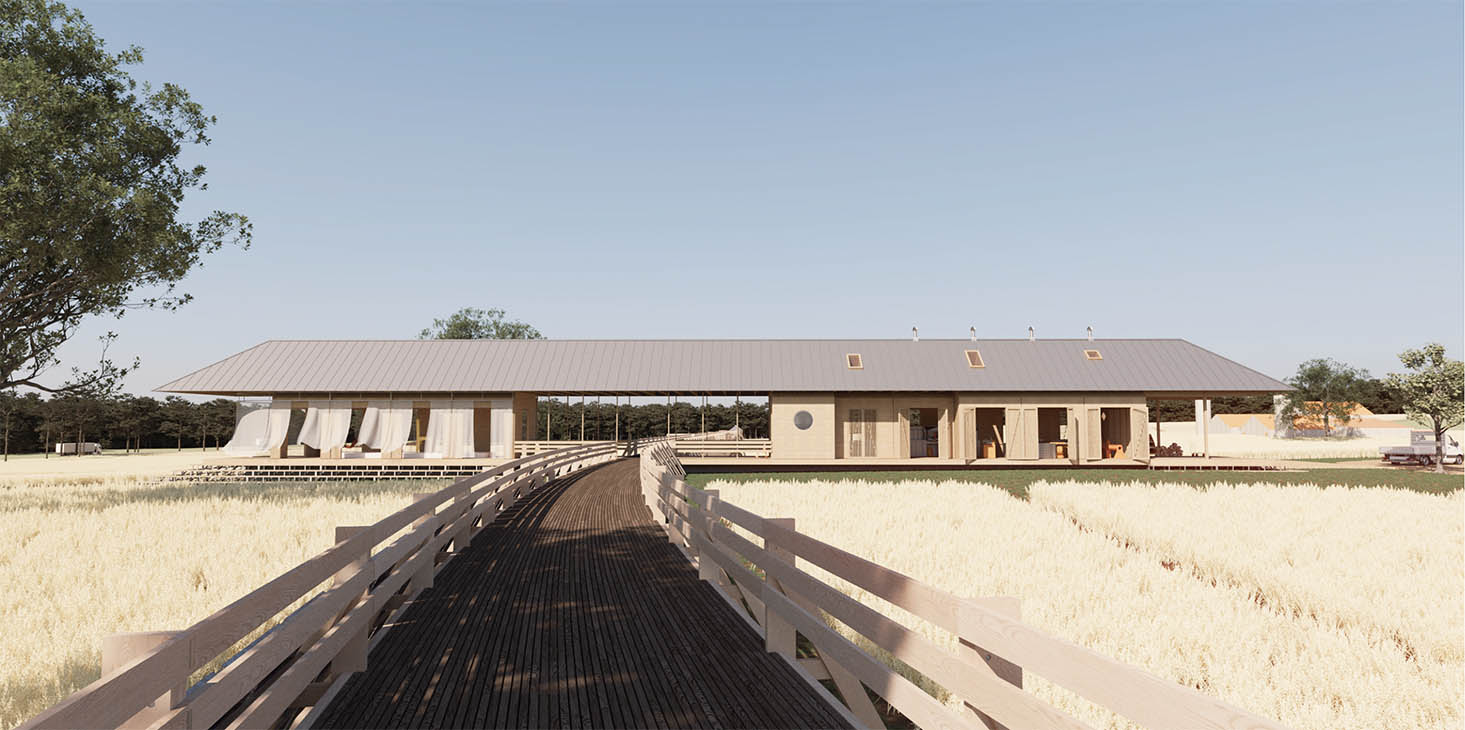
Christian Behling (MArch II ’24) and Gabriel Schmid (MArch II ’24) saw the campus as bifurcated, with the “hands,” represented by the farm, lacking both a material and positive emotional connection to the “head,” represented by the academic buildings. In order to join the two, they designed a boardwalk that functions as a kind of spine across campus. Made of light-frame pine to respect the school’s history of building with on-site materials, it begins at the original schoolhouse and the grave of Laurence Jones, passes by Jones’s house, and then integrates with the farmland and historic barn. “We want this to be a physical path, a formal procession,” says Behling, who is sensitive to the importance of not imposing an entirely new history on the site but rather being in dialogue with its celebrated past.
Consideration for the past also concerns cross-generational respect. Behling and Schmid’s plan facilitates formal and informal mentorships between farmers and students to support new generations of farmers. Programmatically, this takes the form of a farmer living on campus in the newly designed dormitories. Accessed from the boardwalk, these buildings utilize Southern vernacular forms, such as the shotgun house and the wraparound porch. “There’s an important lack of social and spatial hierarchy between the different spaces in the dormitories, with private bedrooms and shared spaces all connected through a procession of doors. There are no hallways,” explains Behling.
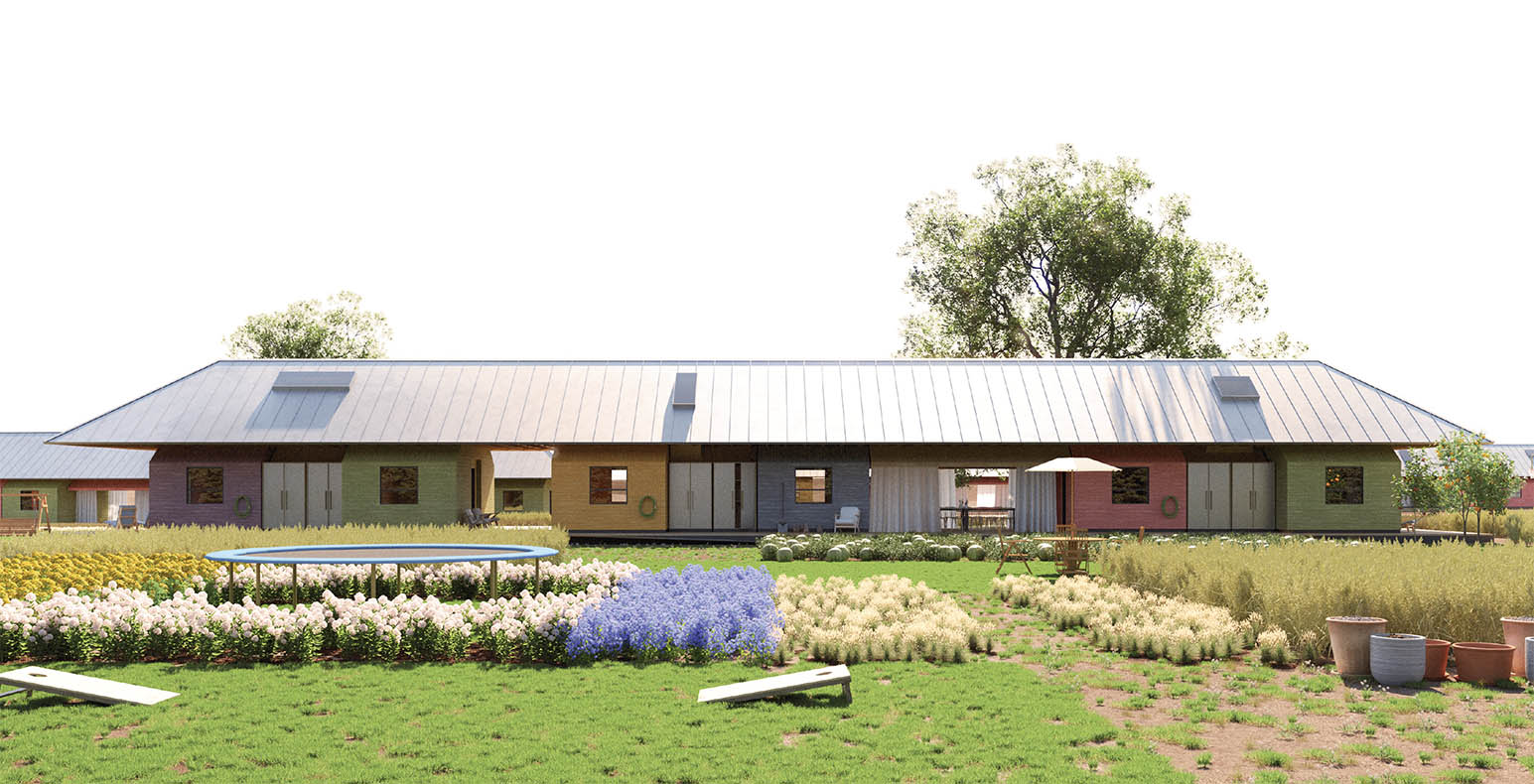
Near the dormitories, each student is provided a small plot to manage. Behling and Schmid believe these should be given without assignments or expectations. “We had an idealistic idea that if each student has a little piece of the school of which they are in charge, it will make them more invested in the mission that the school is trying to promote,” says Behling. Whether they grow food, put in a trampoline, or let it grow wild, the plot remains their own. “It fully embraces the entrepreneurial aspirations the school already promotes.”
These plots are not the only means by which students can learn about a circular system of resources, in contrast to the current model in Mississippi in which crops like soy are largely exported for processing. The new woodshop and makerspace will educate them about the process of growing wood, milling, and making furniture or other resources. The same is true for a new test and production kitchen, where students can learn about culinary practices and make food products, like preserves, that can be supplied to the surrounding community. In the short term, Behling and Schmid believe this exchange could take place at Piney Woods farm stands constructed in the parking lots of the closest Dollar General stores, with similar architecture to that found on campus so as to pull the campus beyond its property.
Mariama Kah (MArch II ’24) and Shant Charoian (MArch II ’23) also saw the agricultural sciences as being disconnected from the rest of the school, with physical relics dotting the campus serving as a reminder of its original ethos. They were reluctant to make any changes to the site, however small. As a result, their respect for the past became a focus on repair. “We were very cognizant that this is a historic campus which is very proud of its history,” says Kah. “We wanted to touch the ground very lightly, so we decided to take an adaptive reuse stance rather than do anything invasive which takes over the campus.”
In an effort to subvert the notion of agriculture as an extractive force, Kah and Charoian looked at a speciality crop that leaves a small footprint and requires minimal space and labor: mushrooms. The opportunity for financial returns from mushroom farming is high, with a projected annual revenue of $62,000 per year for the school. Evoking another of the school’s mottos—“Land as laboratory”—this initiative could then be used to make Piney Woods a magnet for agricultural research and study. “It would become an opportunity for fellowships and engagement with local farmers and universities. It would give it power through economics as well as education,” says Kah.
To further this goal, and in keeping with their anti-interventionist philosophy, Kah and Charoian propose to turn the back end of Iowa Hall, a building that had fallen into disuse but which is slated to become a chemistry lab, into an agronomy studies and mushroom laboratory. Like their peers, they understood the importance of multiuse spaces, especially for a centrally located space like this. Surrounding the laboratory are revived basketball courts, porches and other extensions overlooking the campus, a sunken student plaza, and additional spaces that create moments for gathering.
We did not want to be an imposition on the legacies that exist but rather create space and ground them, to allow them to continue into the future.
Mariama Kah

These sites address the students’ desire to have more time to enjoy nature, which Kah and Charoian learned through a game in which the teens were asked how they connected with the green spaces in their lives. The pair responded to these concerns elsewhere, too. At the barn, they followed the gables of the original roof to create shading moments as well as classrooms, established two laboratories for animal research, and introduced spots for levity and community at the top of the silos, with panoramic views of the farm. The community garden was commandeered to include a food-nutrition lab and student kitchen, while a cabin near the water, a favorite leisure space for students, also features a water- and soil-testing lab. What was once forgotten or given less attention now has a new sense of prominence.
“The intention of the project is for Piney Woods to become the center for agricultural research and ecological study in Mississippi. The space would be used for research through fellowships and partnership, as well as for the teaching of students, who could then see themselves doing agricultural work in the future,” says Kah. But, for her, that must not come at the expense of the architecture already present: just as crops have multigenerational lives and their successful harvesting requires the passing down of knowledge, design at this site cannot ignore the past in an effort to change the future. We did not want to be an imposition on the legacies that exist but rather create space and ground them, to allow them to continue into the future,” Kah continues. “We thought of our additions of these agricultural laboratories as another link in the chain of the school’s history rather than a top-down approach of saying how things should be.
How an urban design studio is proposing a more equitable approach to Boston’s building boom
Over the past decade, the Boston/Cambridge area has attracted tremendous attention and investment as a global center for technology innovation. Major hospitals and research institutions (so-called “meds and eds”) have been the driving forces behind innovation and enterprise districts arising across the city, including Kendall Square, the Seaport, and the planned Harvard Allston Enterprise Research campus. Across the United States and globally, these districts represent a relatively recent product of the market, an urban typology that’s not yet well established. To Andrea Leers, design critic in the Harvard Graduate School of Design’s Urban Planning and Design department, this kind of development is a double-edged sword. She explains, “It’s powerful, and it’s bringing jobs and economic benefit of all kinds, but it is also a kind of community killer because it’s frequently a mono-use and fairly exclusive development type.”
This spring, Leers’s Urban Design studio, “Leveraging Boston’s Building Boom to Advance Equity” (taught with Associate Instructor Anthony Averbeck), took on a real site as a case study in proposing a more vibrant, inclusive, and welcoming type of innovation district in Boston. “The task that we set for ourselves was how to build on the energy and initiative of this burst of economic investment to build more than a cluster of lab buildings and associated facilities, but something that could really benefit and connect with the adjacent neighborhoods to bring a sense of equity—not an island of privilege—to this site,” she says.
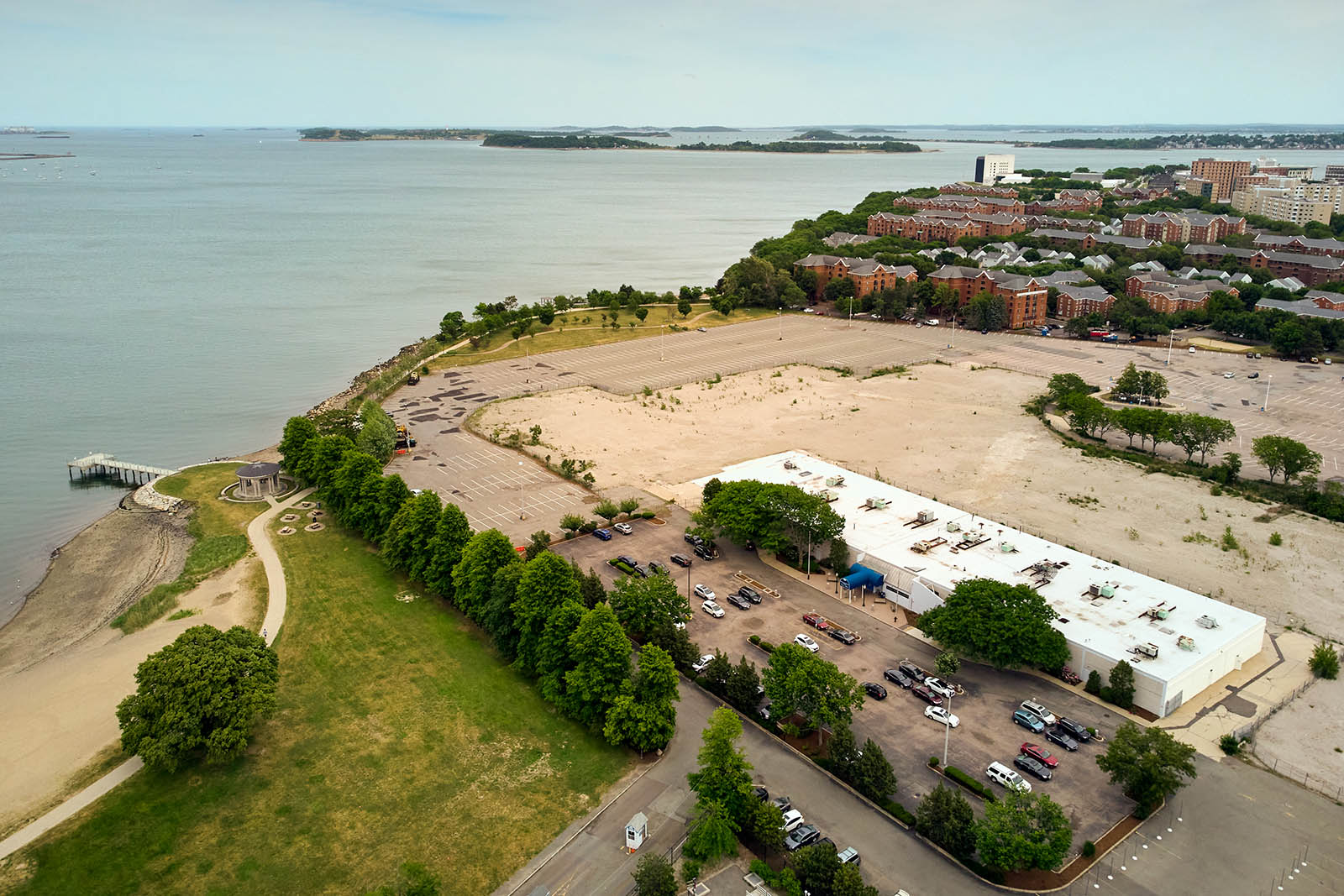
Harvard has an obligation to lend its creativity and research to making its home city as wonderful as it can be, to take part in its community, and to contribute,” Leers points out. “I think that there was real value in having a serious look at Boston itself.
Andrea Leers
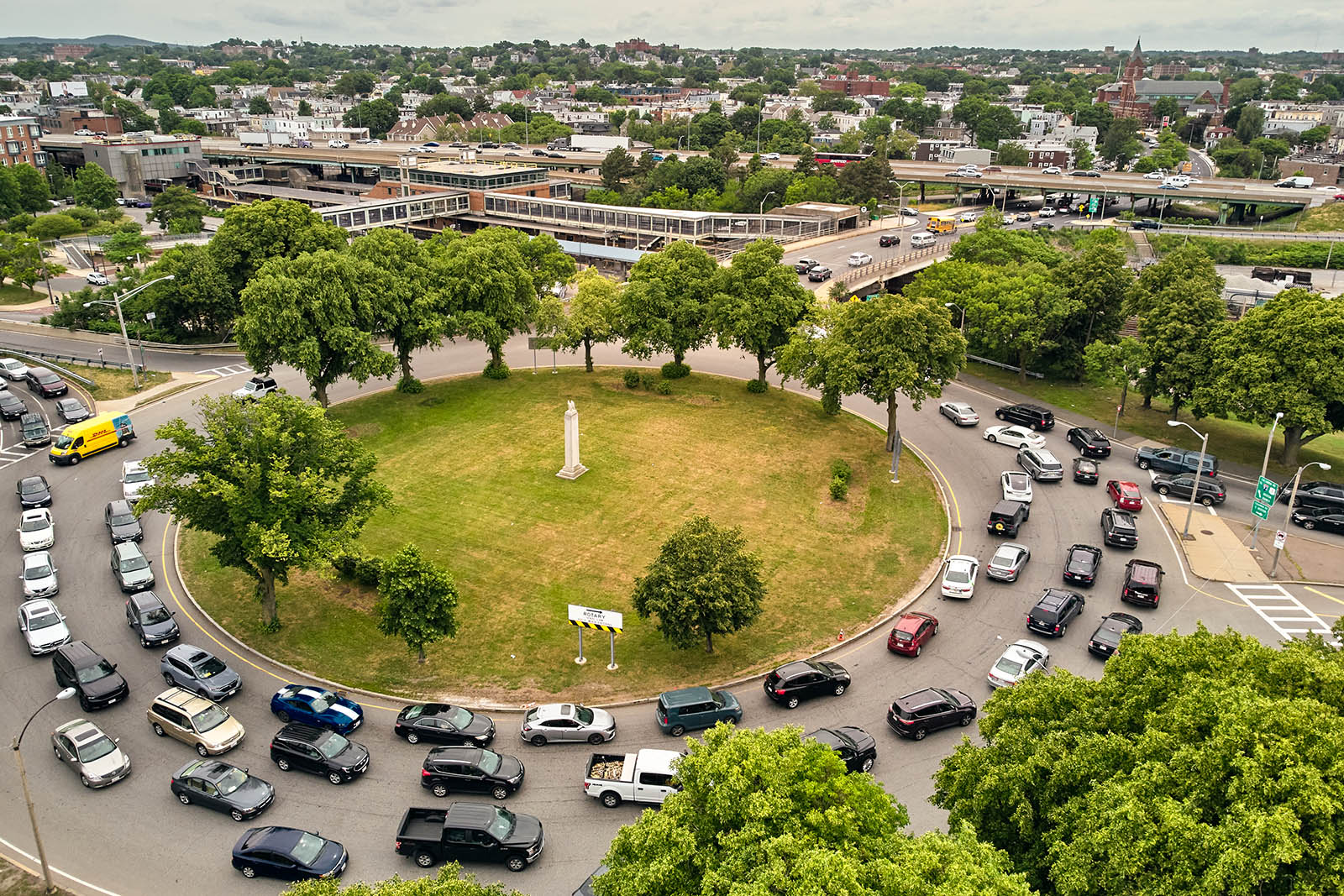
With its proximity to Moakley Park and Carson Beach to the north, Dorchester Bay to the east, a housing development and the institutional campuses of UMass Boston and the JFK Library to the south, and the diverse neighborhood of Dorchester to the west, the site is ideally located, but plagued by accessibility challenges. “The site is well served by transit and by car, but made an island effectively by the elevated highways, train lines, and massive traffic circles,” Leers says. “It’s a great site that’s impossible to get to.”
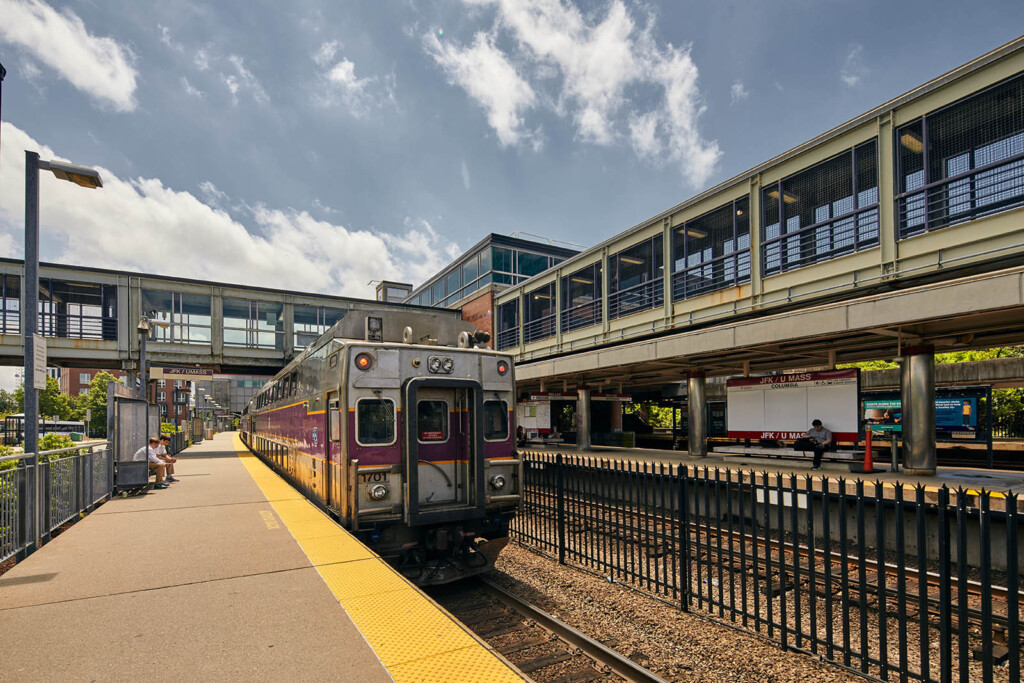
This underdeveloped land, currently a 1,300-space parking lot for UMass students that was formerly a convention center and shopping mall, is a blank slate for a porous new district that can leverage public transit to link nearby communities with economic opportunity through jobs, services, stores, the waterfront, and the city beyond. “[The students] really enjoyed tackling a real site that they could go to visit,” Leers says. “They could walk through the adjacent neighborhoods and get a feel for the place, and then begin to imagine things on it.”
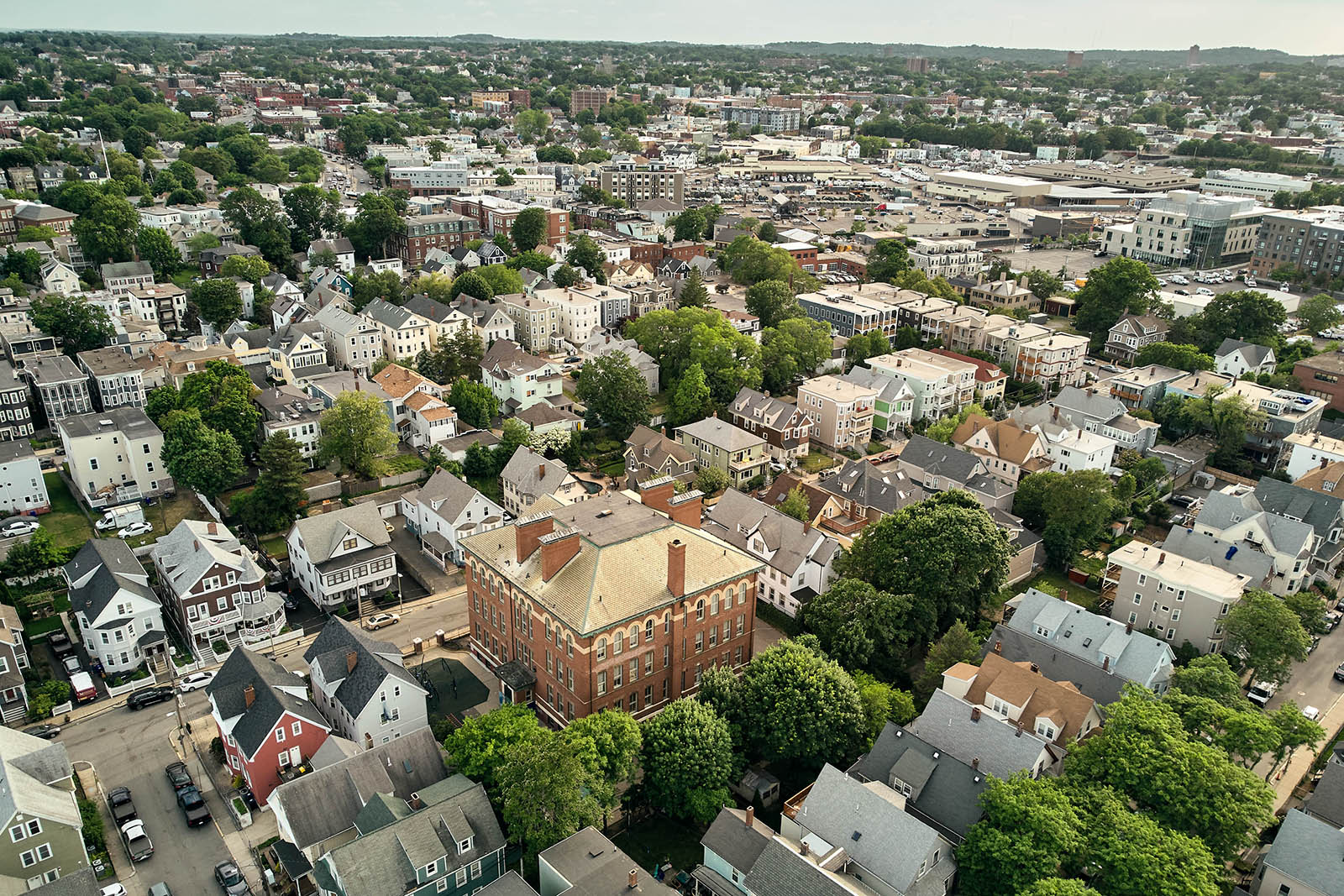
Students undertook an initial hands-on research and analysis phase before diving into the development of their studio projects. Physical engagement with the site, research, and guest lectures from the Dorchester community, UMass leadership, and GSD faculty enriched the students’ understanding of the area’s topography, history, and demography, and helped them identify the unique possibilities and challenges that informed their design strategy. Students also looked at global approaches to innovation districts and other waterfront development precedents to analyze programmatic needs and opportunities specific to the Dorchester site.
Building upon this shared research and analysis, students split into teams to develop and test their design concepts. Through drawings, physical models, and building studies, the students engaged issues of urban form, circulation, and open space, exploring the specific qualities that make a place vibrant but also useful and inclusive to a diverse range of constituents.
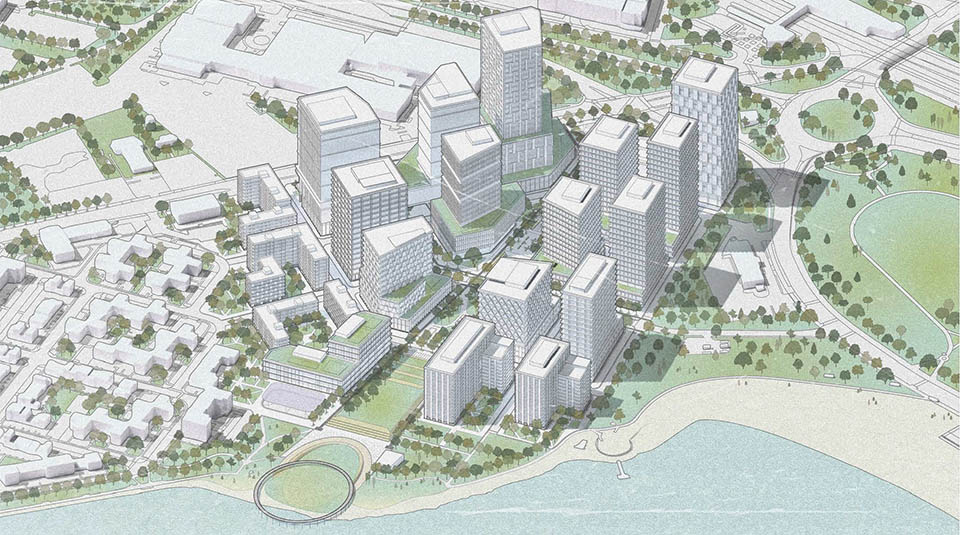
Dorchester Innovation Commons,” designed by Pinyang Chen (MAUD ’22) and Zhuoer Mu (MAUD ’22), features a chevron-shaped development, with a network of streets and buildings widening to either side of a central green. The intent was to draw people from the transit hub down through the district to the waterfront park, via this porous central promenade.
In “Pathways to Prosperity,” a model designed by Danny Kolosta (MUP ’22) and Adriana Lasso-Harrier (MUP ’22), research and interviews with Boston educational and vocational experts inspired the inclusion of three on-site spaces—the Nonprofit Exchange, the Adult Success Navigator, and the Youth Excelerator—that create job training and educational opportunities to help residents gain access to the innovation economy.
“Greenway to the Bay: A Stroll Through the Neighborhood,” a model developed by Dianne Lê (MLA ’22 and Danny Kolosta (MUP ’22), organizes the site through the landscape, anchored by a new diagonal greenway that connects the site and adjacent neighborhoods to the harbor.

The “Well-Tempered Grid” by Saad Boujane (MAUD ’23) and Naksha Satish (MAUD ’22) proposes an urban fabric that reconciles the different street networks and land uses surrounding the site. Disrupting the new grid are strategically placed and distinct blocks of buildings that respond to the adjacent conditions: a gateway node housing biotech and pharmaceutical labs, a learning commons interfacing with the residential neighborhood, and an eco-innovation hub on the waterfront.
The students’ concepts for the Dorchester Bay site present varied approaches to density, building scale, programming, and urban frameworks; but the exercise yielded critical learnings that were shared across the board. Innovation districts are a recent phenomenon, and a typology that’s not yet well defined—there’s no standard that can serve all sites. They discovered that a coherent blend of street networks, open spaces, access to the water, and inviting places to go matter more than the density and composition of buildings.
“Going in, we were really concerned with what was it going to be like to have so much building in this place where there wasn’t any and nothing like it nearby,” recalls Leers. “And in fact, that turned out not to be the key question. It was really interesting to learn the importance of just making it a normal piece of city.” Critically, integration of programmatic anchors that engage the community—whether training or education facilities, spaces for family recreation, childcare centers, and neighborhood retail—are crucial to making innovation districts more inclusive to and integrated with their neighbors.
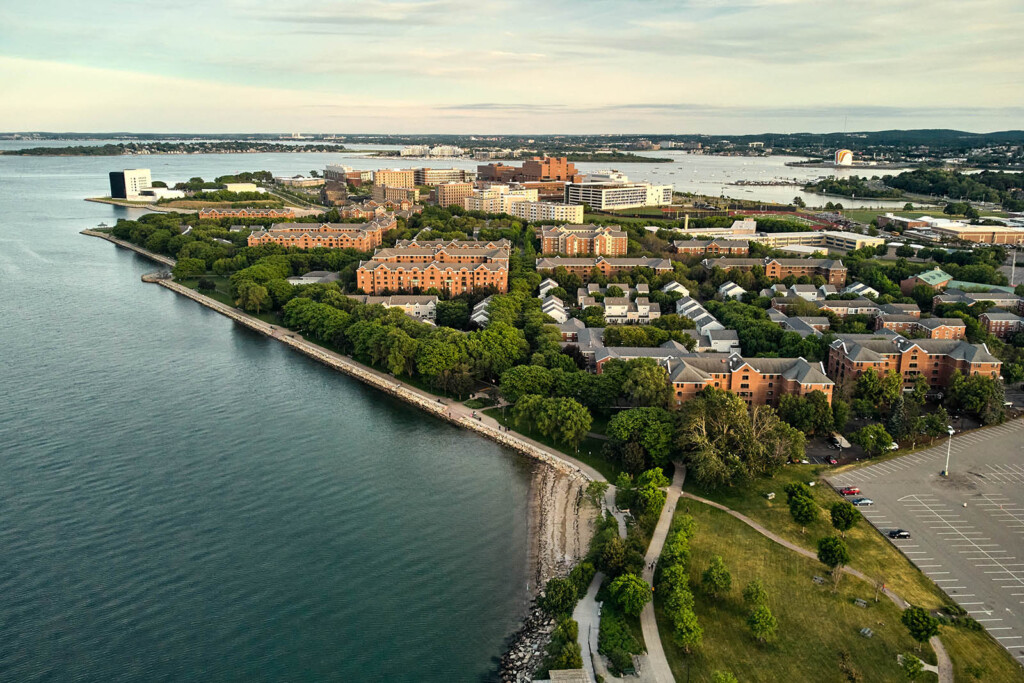
Shigeru Ban in Conversation with Mohsen Mostafavi about Designing for Refugee Relief
In the early weeks of the Russian invasion of Ukraine, Pritzker-winning architect Shigeru Ban flew to Chełm, Poland, to aid in the development of refugee shelter infrastructure. In a conversation with Mohsen Mostafavi, he discusses his experiences designing and producing partitions for large shelters after the 1995 Kobe and 2004 Niigata earthquakes in Japan, and how designers can apply his techniques to emerging crises in Ukraine and across the world.
This interview was conducted for the In Conversation series on japanstory.org , a multifaceted research project at Harvard University’s Graduate School of Design. Japanstory.org conducts its work through academic activities, as well as design research, while inviting people from a variety of fields to share their voices, viewpoints, and ideas as we think together about the future of the city.
Work in Progress: Sijia Zhong’s heritage site in Lima, Peru
Sijia Zhong (MLA I AP ’23) describes her final project for the option studio “Transversal Grounds: Engaging Infrastructure, Landscape and Heritage for Lima’s New Urban Commons” led by Sandra Barclay and Jean Pierre Crousse, spring 2022.
Work in Progress: Rayshad Dorsey’s Domestic Grounds
Rayshad Dorsey (MArch I ’23) describes his final project for the option studio “Tall, Lean, In-between” led by Christopher C.M. Lee, spring 2022.
Work in Progress: Justin Hailey’s Tar Creek Superfund Site
Justin Hailey (MLA II ’23) describes his final project for the option studio “OTTAWA COUNTY REMADE: Toxic Transformations in the Tri-State Lead and Zinc District, Oklahoma” led by Niall Kirkwood, spring 2022.
